WEST COAST NUT
MARCH 2024 ISSUE
SPOTLIGHT: CONNOR WAGNER ON THE FREEDOM AND FORTITUDE OF MOVING BACK TO THE FAMILY FARM
SEE PAGE 52
TRUSTED PARTNER IN AG
IN THIS ISSUE:
A YEAR-LONG NOW STRATEGY FROM FIELD TO EXPORT
SEE PAGE 38
EVOLVING INSECT PEST PRESSURES IN PISTACHIOS
DRIVEN BY WARMER TEMPERATURES
SEE PAGE 42

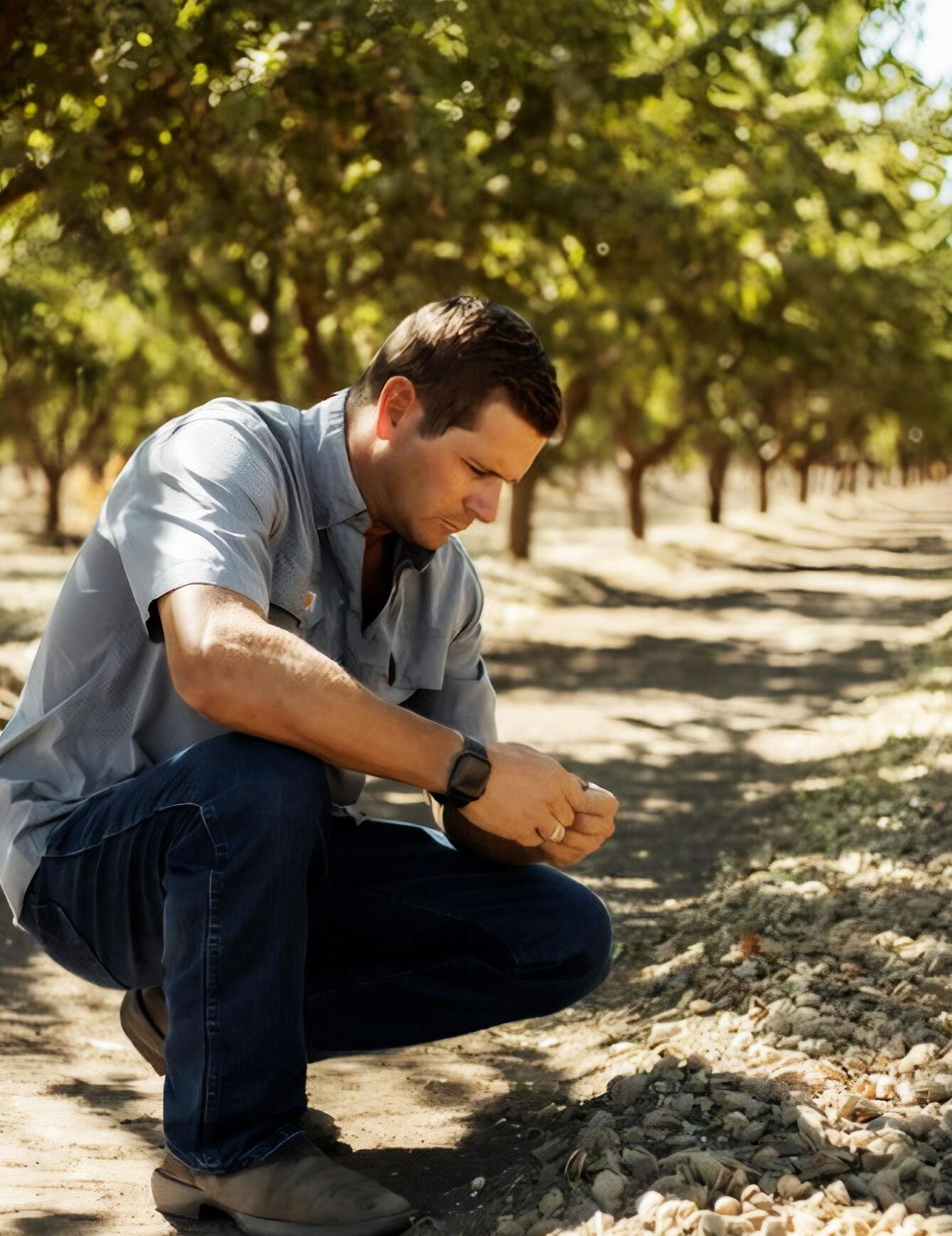

SHIELD YOUR YIELD. GET FAST-ACTING, LASTING CONTROL OF KEY ALMOND ORCHARD PESTS. Visit your FMC retailer or SHIELDYOURYIELD.COM to punish pests this season. Don’t let costly Lepidopteran pests wreak havoc on your harvest. Shield your yield with Avaunt® eVo insect control at mummy spray followed by a hull split application of Altacor® eVo insect control powered by Rynaxypyr® active. These evolved, concentrated formulations deliver rapid and residual control of Lepidoptera, as well as several species of weevils, beetles and leafhoppers commonly a threat to tree nuts. Multiple modes of action strengthen your IPM program. Always read and follow all label directions, precautions and restrictions for use. Some products may not be registered for sale or use in all states. FMC, the FMC logo, Altacor, Avaunt and Rynaxypyr are trademarks of FMC Corporation or an a liate. ©2023 FMC Corporation. All rights reserved. 23-FMC-3366 12/23
Publisher: Jason Scott
Email: jason@jcsmarketinginc.com
Editor: Marni Katz
Email: marni@jcsmarketinginc.com
Associate Editor: Cecilia Parsons
Email: cecilia@jcsmarketinginc.com
Production: design@jcsmarketinginc.com
Tel: 559.352.4456
Fax: 559.472.3113
Web: www.wcngg.com
Raman Bansal Research Entomologist, USDA-ARS
Vicky Boyd
Contributing Writer
Kathy Coatney, Contributing Writer
Lori Fairchild
Contributing Writer
Mahesh Ghimire
UCCE Assistant Research Specialist, Stanislaus County
Sudan Gyawaly
UCCE IPM Advisor, Butte County
Roger A. Isom President/CEO, Western Agricultural Processors Association
Theresa Kiehn President/CEO, AgSafe
Mitch Lies
Contributing Writer
Catherine Merlo
Contributing Writer
Renee Pinel President/CEO, Western Plant Health
Kristin Platts Digital Content Writer
Jhalendra Rijal UCCE Area IPM Advisor, San Joaquin County
Mike Wade Executive Director, California Farm Water Coalition
Jason Scott MS, Publisher and CEO, JCS Marketing Inc.
Surendra
Kevin
Elizabeth
Advisor, Tulare County
Katherine Jarvis-Shean
Steven Koike Tri-Cal Diagnostics
Jhalendra Rijal UCCE Integrated Pest Management Advisor, Stanislaus County
Mohammad Yaghmour UCCE Area Orchard Systems Advisor, Kern County

4 Elevating Your Brand: The Imperative of a Professional Website for California Agriculture 6 Finding Sustainability with Regenerative Agriculture 10 Pistachio Industry Undergoing Leadership Changes 14 Pesticides in the Frontline Against Climate Change and Invasive Threats 18 Almond-growing family adds retail sales, food manufacturing as part of transition planning for the next generation 22 Mood at Winter Hazelnut Meeting Lifted by Packer Bonuses 26 California Walnut Growers Face Tough Times With Tough Decisions 30 View from the Top: A New Turn of Leadership. Blake Vann, the new chair of the Almond Alliance of California, knows what’s needed and where to focus. 36 Will the Last Person to Leave California Please Turn the Lights Off? 38 A Yearlong Management Plan for Navel Orangeworm from Field to Export 42 Evolving Insect Pest Pressures in Pistachio Driven by Warmer Temperatures 46 Building a Safety Foundation with an Injury and Illness Prevention Program 48 Status of Brown Spot Damage Caused by Hemipteran Pests in Almond 52 From the Orchard: Connor Wagner on the Freedom and Fortitude of Moving Back to the Family Farm 56 California’s New Salmon Strategy 58 Navel Orangeworm and Carpophilus Beetle Pressures Put Spotlight on Research Contributing Writers & Industry Support UC Cooperative Extension Advisory Board
K. Dara Director, North Willamette Research and Extension Center
Day County Director/UCCE Pomology Farm Advisor, Tulare/Kings Counties
Fichtner UCCE Farm
Solano The articles, research, industry updates, company profiles, and advertisements in this publication are the professional opinions of writers and advertisers. West Coast Nut does not assume any responsibility for the opinions given in the publication. Award Winning Editorial By the Industry, For the Industry IN THIS ISSUE
UCCE Area Orchard Systems Advisor, Yolo and
View our ePublication on the web at www.wcngg.com
See page 52 In this month's From the Orchard West Coast Nut talks with Connor Wagner about how he is making farming work in the 21st century--with help from his family, of course. SPOTLIGHT:FromtheOrchard:ConnorWagnerontheFreedomand FortitudeofMovingBacktotheFamilyFarm March 2024 www.wcngg.com 3
ELEVATING YOUR BRAND: THE IMPERATIVE OF A PROFESSIONAL WEBSITE FOR CALIFORNIA AGRICULTURE
By JASON SCOTT, MS | Publisher and CEO, JCS Marketing Inc.

In the heart of California’s agricultural landscape, where innovation meets tradition, the significance of a professional website cannot be overstated. Whether you’re a small family farm or a large-scale producer, your website serves as a gateway to the global marketplace, showcasing the rich bounty of California agriculture to the world. Here’s why every agricultural business in California needs a professional website, and how it can enhance your brand image on both local and international stages.
First impressions matter, especially in the competitive world of agriculture. Your website is often the first point of contact for potential customers, investors, and partners. A well-designed, user-friendly website communicates professionalism, reliability, and com-
mitment to quality—traits that are essential for building trust and credibility in the agricultural sector. With the international community watching, your website is a powerful tool for showcasing the exceptional products and practices that define California agriculture.
A professional website serves as a digital storefront, providing roundthe-clock access to your products and services. Whether you specialize in organic produce, premium wines, or sustainable livestock, your website enables customers from around the world to discover and purchase your offerings with ease. By optimizing your website for search engines and integrating e-commerce functionality, you can expand your reach and tap into new markets beyond California’s borders.
Moreover, your website is a platform for storytelling, allowing you to share the unique story behind your brand with a global audience. From the rich history of your family farm to the innovative techniques driving agricultural sustainability, compelling content humanizes your brand and fosters connections with customers who share your values. Through engaging blog posts, immersive multimedia, and captivating imagery, you can captivate visitors and inspire loyalty to your brand.
In addition to attracting customers, a professional website is essential for attracting investment and fostering partnerships within the agricultural community. Whether you’re seeking
funding for expansion or collaboration opportunities with other stakeholders, a polished online presence demonstrates your seriousness and vision as a business leader. By showcasing your achievements, certifications, and industry accolades, you can position your brand as a trusted leader in California agriculture.
In an increasingly interconnected world, your website serves as a bridge between local traditions and global trends in agriculture. With the international community keeping a close eye on California’s agricultural practices, your website is a platform for sharing best practices, innovation, and sustainability initiatives with a global audience. By demonstrating your commitment to environmental stewardship, social responsibility, and ethical sourcing, you can attract attention and admiration from customers and stakeholders worldwide.
A professional website is not a luxury; it’s a necessity for every agricultural business in California. From enhancing your brand image and expanding your market reach to fostering connections with customers and stakeholders, your website plays a crucial role in shaping perceptions and driving success in the digital age. Remember, the international community is watching, and your website is your window to the world; make it count.
Comments about this article? We want to hear from you. Feel free to email us at article@jcsmarketinginc.com
4 West Coast Nut March 2024





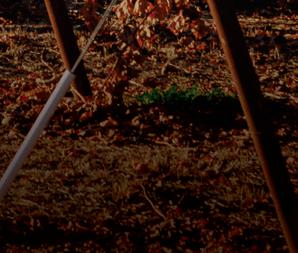
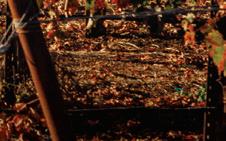


















































Multigenerational operations are built on grit, so keep it in your bloodline, not your dripline. Rain Bird®’s GritX™ Driplines feature self- ushing emitters that eliminate any worry of clogged lines and uneven watering. Designed for quick and easy installation, GritX Driplines improve labor efficiency and water usage. Take your irrigation to a new level of dependability with GritX Driplines. Learn more at getgritx.com.


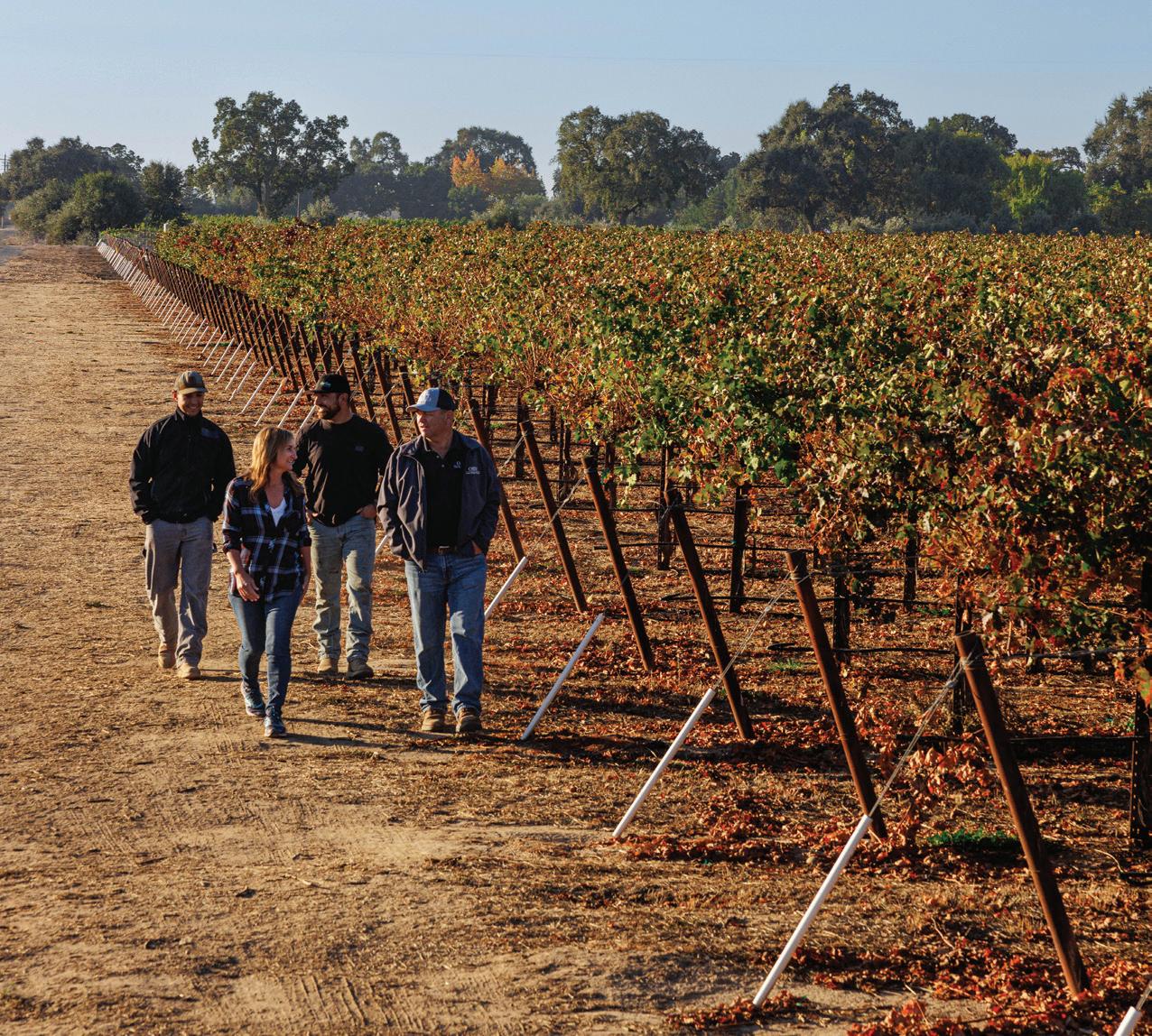

Keep grit in your bloodline, not your dripline. Oak Ridge Winery, family-owned and -operated for ve generations. Oakridgewinery.com
FINDING SUSTAINABILITY WITH REGENERATIVE AGRICULTURE
By KRISTIN PLATTS | Digital Content Writer
When Rosie Burroughs was diagnosed with stage 4 cancer a few years ago, she approached the treatment of her body like she does the soil on her farm: tackling it alternatively. For Burroughs, who is now cancer-free, every decision she and her family make on their farm is in the goal of soil health. The family has farmed in California for more than 130 years. Today, they grow an ever-evolving mix of regenerative organic tree nuts and livestock in Merced County and hold their practices to an unrelenting objective of improving the health of their land.
As growers explore systemic ways to grow food and fiber, the regenerative agriculture movement is continuing to create a buzz. But there’s also some confusion around the term “regenerative agriculture” and what it means, exactly. The topic was on the agenda at both the Almond Conference (TAC) in December and JCS Marketing’s Inputs Ag Summit in January. Both occasions allowed growers and industry experts to participate in conversations that rooted out the meaning of regenerative.
“For me, regeneration means working with practices that improve living ecosystems by restoring water, carbon and nutrient density cycles, which is enhancing the soil health with biodiversity and nutrient density,” Burroughs said during a panel she spoke on about regenerative agriculture at the Inputs Ag Summit.
She maintains soil, just like the human gut, requires the right biome and an ability for it all to work together.
“For us, all life starts in the soil, from the microbes in the soil to the birds in the air, all life depends on water and all these nutrient cycles that are part of regenerative practices,” Burroughs said.
Farming regeneratively can look a little different to each grower, but it often includes a combination of practices like little to no-tilling, cover cropping, and crop diversity, whether through the planting of multiple crops in one system or by utilizing livestock for weed and pest control.
For Justin Wylie, who spoke on the same panel, regenerative means not only helping the soil, but helping his bottom line.
“For me, it’s improving biology, improving soil health,” he said. “At the end of the day, what we’re looking to do is reduce inputs, reduce costs.”
Wylie co-operates Wylie Farms, a ranch management and consulting company. They also farm about 4,000 acres between Chowchilla and Madera, Calif., 600 acres of which is regenerative pistachio and citrus.
Wylie said if you look at the history of the last decade and a half or so, growers have had to think in new ways as markets change. And while pistachios are seeing huge price drops, he said he’s looking at a final price comparative to what his dad received in 1992, while modern-day inputs have only continued to skyrocket.
“In a lot of cases when there are drops in production or pricing, we make up for that with new varieties, by ripping something out and planting

Speaking at the Inputs Ag Summit in January, Rosie Burroughs, a Merced County regenerative organic grower, said regeneration means working with practices that improve living ecosystems (photos by K. Platts).
something new, higher densities, we’re looking at trellis now with crops we’ve never even considered it in,” Wylie said.
When speaking to his own clients about regenerative and where to save on the ever-increasing costs of inputs, Wylie said the focus is on survival.
“It’s mainly about how do we keep this thing profitable? And what I’m seeing on my pistachio budgets is our conventional budgets are $3,400 an acre in Madera with water, and our organic regenerative budgets are $2,700 an acre, and that is without any organic premium for now,” he said.
The Science Behind It
A panel at TAC addressed regenerative agriculture alongside the topics of climate smart and organic. Amélie Gaudin, associate professor and endowed chair in agroecology at UC Davis, said while each are different subjects, they share a lot of common ground.
She said the three concepts aim to manage for sustainability and look beyond productivity and yield.
“Regenerative systems apply an ecosystems approach to reaching management and conservation goals” Gaudin said. “There is flexibility in implementation, no single recipe, it’s context specific, and there’s a high likelihood of tradeoffs between functions. There’s frequent and multiple tradeoffs to manage in agriculture, so that’s something to keep at the forefront.”
How regenerative differs from climate smart and some organic systems
6 West Coast Nut March 2024

hinges on redesign of the orchard and a stacking of practices, Gaudin said.
“Regenerative systems are ecologically complex, with low to no synthetic input and rely on farmers’ knowledge and experience to be successful,” she said. “It has livestock integration at the center of the framework and an emphasis on equity that climate smart frameworks don’t necessarily have.”
Amelie Gaudin, associate professor and endowed chair in agroecology at UC Davis, presented on regenerative agriculture at TAC in December. She has worked on regenerative research for the past two decades.

With skyrocketing input costs, Justin Wylie, who co-operates a ranch management and consulting company, said when he talks to his clients about regenerative, the focus is on survival.
Having worked on organic and regenerative systems for the last two decades, she said while she’s happy people are having conversations about regenerative now, she also cautions to be careful not to wash down the definition of regenerative agriculture, or worse, to greenwash it.
Describing various levels of regenerative, Gaudin said entry level would
be an orchard that is designed primarily to build soil health and sequester carbon, while a deeper regenerative system is also going to optimize biodiversity and conservation. At its deepest level, it will include an equity lens that supports individuals and community
ContinuedonPage8
Contact us to see how we can help! (559)584-7695 or visit us as www.superiorsoil.com Serving California since 1983 March 2024 www.wcngg.com 7
while striving for equity and reversing decades of extractions.
But she believes the industry also needs to move beyond definitions in order to make progress.
“My role is to provide data and bring this back to our scientific understanding of potential and processes to inform management. Whether you’re talking about organic, regenerative or climate smart, those systems must foster and rely on biodiversity to be effective” Gaudin said.
That biodiversity must be thought about in time and space, she explained, considering aboveground and belowground organisms in the living soil ecosystem.
“There is a very large number of papers in ecology literature since the ‘50s that have shown biodiversity sustain high functioning and productive ecosystems,” she said.
She said this is where a crop like almonds can win.
“We don’t till the soil so much; there’s a rainfed winter dormancy period when alleyways can be diversified, and there’s a lot of ways we can implement some of the principles,” she said.
In order to move beyond the definition, Gaudin said it will be necessary to ground an approach to principles rather than practices, since practices look different in different parts of the state.
“Eventually, you want to apply some principles that are core to ecosystem functioning,” she said.
Principles include maximizing biodiversity, maintaining living roots, keeping the soil covered, frequent and diverse input of organic matter, minimal chemical and physical disturbances, and adaptation to landscape and communities, she explained.
“Can we grow a high-biomass cover crop everywhere? Maybe not. Can these systems be considered regenerative? Maybe, if you can implement those principles in a way adapted to your context,” she said.
These systems already exist across California, she added, and have existed for quite some time, with growers implementing innovative practices through things like whole orchard
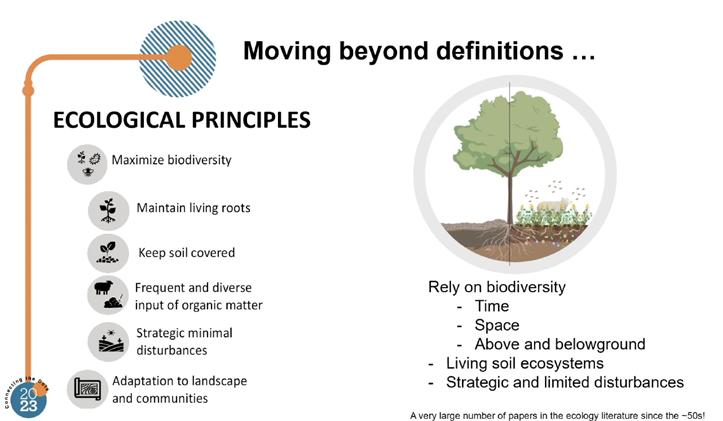
In order to move beyond the definition of regenerative agriculture, Gaudin said it will be necessary to ground an approach to principles rather than practices, since practices look different in different parts of the state.
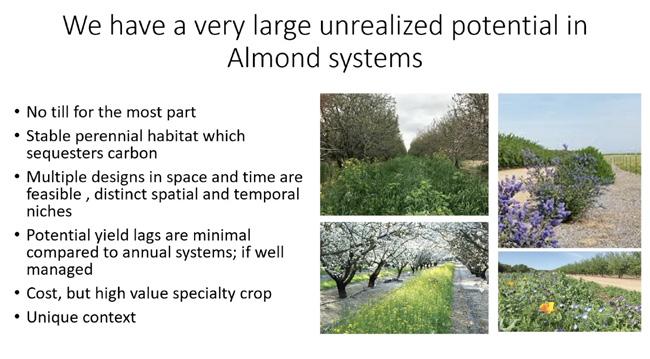

Gaudin said almonds are in a unique position and have the potential to make a difference at a large scale, since many of the principles of these practices are already in place.
recycling, organic amendments and compost, understory covers, cheap mulches and hulls and shells.
“We have a large menu of practices that can be implemented in various ways according to your operation, and soil type and water availability, for instance. Landscape features can also be considered; challenges and outcome of the practices will likely vary if your orchard is surrounded by almond, versus surrounded by a natural area or a more diverse crop mix.”
It can be easier to implement regenerative practices in high-value specialty perennial systems than in annual sys-
tems, Gaudin noted, so she sees a large unrealized potential in almond systems, which are already mostly no-till, consist of stable, carbon sequestering habitat, and where minimal potential yield lags have been observed.
“We’ve got a unique context in which we can make a difference at a large scale,” she said.
Comments about this article? We want to hear from you. Feel free to email us at article@jcsmarketinginc.com

ContinuedfromPage7
8 West Coast Nut March 2024




OPTIMIZE YOUR WATER EFFICIENCY ©2024 Tessenderlo Kerley, Inc. All rights reserved. Crop Vitality™ and CaTs® are registered trademarks of Tessenderlo Kerley, Inc. Call: (800) 525-2803 | Email: info@cropvitality.com www.cropvitality.com Applica�on Guide 100% soluble calcium condi�ons soil, thereby improving water infiltra�on. Blends with most nitrogen fer�lizers, including UAN and liquid urea. Easy and convenient applica�on any �me of season. Improves water use efficiency. See How It Works

Pistachio Industry Undergoing Leadership Changes
By CECILIA PARSONS | Associate Editor
10 West Coast Nut March 2024

While California pistachio industry leadership is currently in transition, there remains a strong commitment by grower organizations to meet the challenges that come with moving ever larger pistachio crops and securing stable export and domestic markets.
As stated at the 2024 UC Statewide Pistachio Day, the pistachio industry’s total acreage is at 605,442 total acres, and when all are bearing, crop totals are expected to exceed 2 billion pounds. This year’s crop nearly hit the 1.5-billion-pound mark.
Leadership at both American Pistachio Growers and Administrative Committee for Pistachios has undergone significant changes in the past three months. Joel Nelsen, formerly executive director of California Citrus Mutual, is filling in as interim CEO of American Pistachio Growers after the departure of APG’s first CEO Richard Matoian in December. APG’s executive committee is currently working to fill that position permanently.


Over at Administrative Committee for Pistachios, Bob Klein, longtime manager of ACP and California Pistachio Research Board, has announced his retirement in April. His replacement, Stephen Vasquez, is already on board
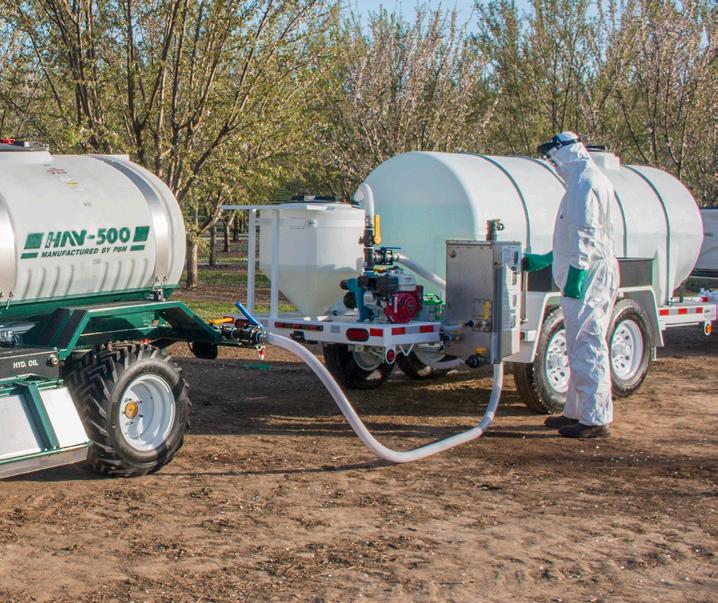
ContinuedonPage12
PBM Supply & MFG., INC. Quality Agricultural Spray Equipment, Parts and Supplies www.pbmsprayers.com www.pbmtanksupply.com Since 1969 CLOSED MIXING SYSTEMS PBM’s Tier-1 closed mixing system will drain, triple rinse, and cut chemical containers while they are sealed inside a stainless steel mixing box. Available on PBM’s Batch Mixing Trailers, Mixing Stations, or Sold Individually to adapt to your existing mixing equipment. Chico - 530-345-1334 324 Meyers St. Chico, CA 95928 Yuba City - 530-671-0068 955 N. George Washington Blvd. Yuba City, CA 95993 Fowler - 559-834-6921 3732 S. Golden State Blvd. Fowler, CA 93625 Murrieta - 951-696-5477 41648 Eastman Dr. Murrieta, CA 92562 -Sprayers- -Tanks- -Liquid Delivery Trailers- -Parts & AccessoriesCall 1-800-688-1334 To Find A Dealer Near You! March 2024 www.wcngg.com 11
Bob Klein, longtime manager of Administrative Committee for Pistachios and California Pistachio Research Board, has announced his retirement in April (photo courtesy B. Klein.)


at processing and handling of pistachio and establish food safety regulations.
APG represents more than 800 pistachio growers in California, Arizona and New Mexico. It’s board of directors is made up of pistachio growers and the organization is funded by growers and independent processors with a shared goal of increasing global consumption of American-grown pistachios.
The Tide That Lifts All Boats
Rich Kreps, recently elected chair of APG’s executive committee, said in an interview the organization’s focus is on assisting all pistachio growers in producing quality crops and marketing them worldwide.
Kreps noted a key position at APG was filled in November. Scott Fryer joined American Pistachio Growers as Vice President of Global Marketing. Fryer will lead APG’s initiatives to expand consumption of American-grown pistachios in the U.S. and abroad. Before joining APG, Fryer served five years as marketing innovation director for Sun-Maid Growers in Fresno where he directed the innovation and base business marketing efforts.
In a statement, Fryer said, “I am excited to join American Pistachio Growers and help drive demand for pistachios across the world. American pistachios are an incredibly healthy and nutritious snack, and if we can make consumers aware of the benefits, I have no doubt they will love them as much as my family and I do.”
APG staff includes Wes Wilson who handles membership activities and communication. Amber Wilson is in charge of nutrition research. Cadee Condit handles government and industry relations.
The leadership role at APG will be filled by an individual that possesses progressive insight on marketing using social media and digital marketing. Kreps said the executive committee charged with finding a new CEO said the new leader must recognize the importance of highlighting the nutritional and health benefits of consuming pistachio nuts.
Nelsen said his interim role is primarily stabilizing staffing at APG and assuring APG members the organization is being led with an abundance of positive energy.
ContinuedfromPage11
there to ensure a smooth transition.
The Fresno-based ACP administers the federal marketing order for pistachios grown in California, Arizona and New Mexico. It was established in 2004 by growers to regulate quality of pistachios, mainly testing for aflatoxin levels. It is authorized to gather statistics from handlers and fund research aimed
“We’re a tide that rises all boats,” Kreps said of APG. “With 1.5-billion-pound crops, we will need good marketing strategies that will ensure positive economic returns for all growers.”
He said the executive committee has been actively seeking possible candidates for the CEO position and is identifying the criteria they believe is necessary for the successful candidate.
“This is a good organization and we need to tell our story, be more aggressive in finding and filling markets.”
“My priority for APG is to assist it in delivering a better return on investment for growers,” Nelsen said.
Moving forward, Kreps said it is critical for APG leadership to seek government support for on-farm sustainability projects. The organization was successful recently in securing a $5 million grant from CDFA’s Healthy Soils program.
Trade assistance is another key role for APG, and Kreps said the organization is well-positioned to go out and secure new markets and build established ones for larger crops in the future.
Rich Kreps, recently elected chair of APG’s executive committee, at right, with interim APG CEO Joel Nielsen, said it is critical for American Pistachio Growers leadership to seek government support for on-farm sustainability projects (photo courtesy C. Parsons.)
12 West Coast Nut March 2024
As the new executive director at Administrative Committee for Pistachios, Vasquez will also manage California Pistachio Research Board, a crucial research effort that supports a variety of projects to help pistachio growers (photo courtesy S. Vasquez.)
As the new executive director at ACP, Vasquez will also manage CPRB, a crucial research effort that supports a variety of projects to help pistachio growers. Vasquez was formerly a technical viticulturalist at Sun-Maid. He was also a UCCE viticulture farm advisor, a research agronomist for an international fertilizer company and director of agronomy for a large table grape farming company.
Vasquez stressed the importance of new research to improve production and enable growers to deliver a quality product.
Research Vital for Industry
“The pistachio industry is in good hands with these researchers who take on projects that will positively impact the bottom line,” Vasquez said.
Compared to the walnut and almond industry, the pistachio industry is relatively young, he said, but growers are producing a quality crop, helped by CPRB’s production research.
“We focus on needs of the indus try, and look for research projects that solve problems,” Vasquez said. The board is composed of growers who read the research proposals, meet with the researchers and identify which projects will provide benefits to the pistachio industry. Executive summaries of the funded research are published each year by CPRB.
“We’re a tide that rises all boats. With 1.5-billion-pound crops, we will need good marketing strategies that will ensure positive economic returns for all growers.”
-Rich Kreps, American Pistachio Growers


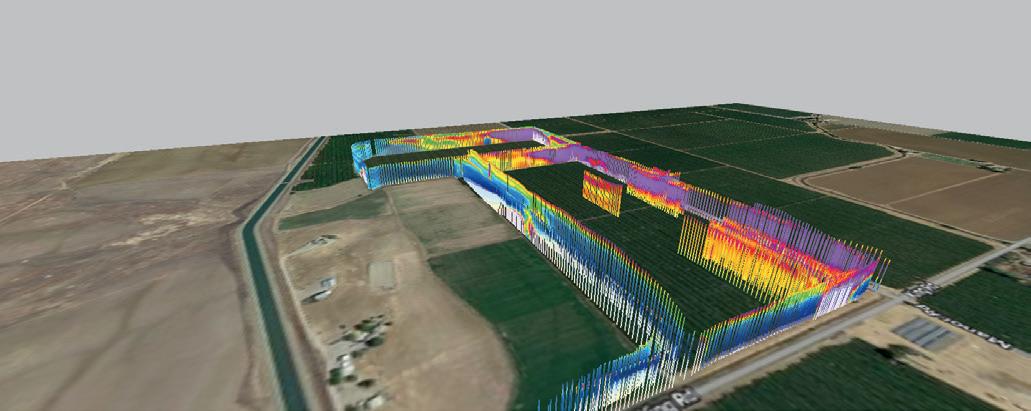
One of the ongoing research projects funded by CPRB is the Sterile Insect Technique study being conducted by UC Entomology Specialist Houston Wilson and USDA-ARS scientist Chuck Burks. The goal of this project is to augment existing IPM tools for navel orangeworm control. Over six years of conducting trials to solve this complex issue, they evaluated different strains of NOW, dispersal and effects on wild populations of NOW.
Other critical areas where research can help growers are impacts of climate change, variety selection and reducing aflatoxin contamination in pistachio nuts.
Comments
this article? We want to hear from you. Feel free to email us at article@jcsmarketinginc.com
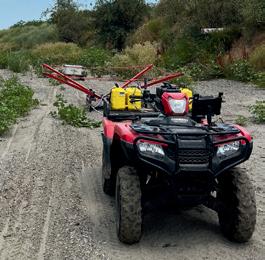
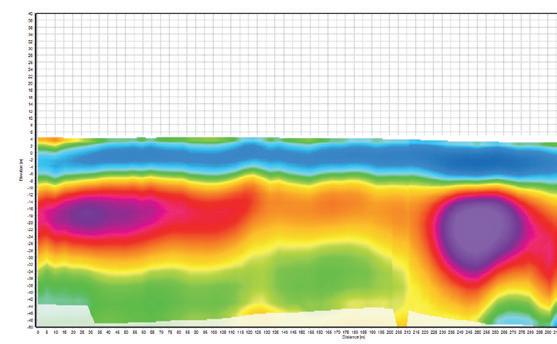



"
about
ContactNathan Azevedo GroundWaterMaps Electromagnetic Groundwater Aquifer Mapping AG or DOMESTIC WELL LOCATING ABOVE GROUND E-LOGGING GROUNDWATER RECHARGE 3D & 2D MAP REPORTS Capabilities Data Collection/Data Processing Data Interpretation/Reporting Call Text or Email Nathan- 530-717-0679 nathan@groundwatermaps.com 530-717-0679 Maxwell, CA nathan@groundwatermaps.com Ag/Domestic Well Discovery Above Ground E-logging Groundwater Recharge Mapping/Discovery Groundwater Aquifer Mapping Clay
Sand
Gravel
clay March 2024 www.wcngg.com 13
Sandy
Pesticides in the Frontline Against Climate Change and Invasive Threats
By RENEE PINEL | President/CEO, Western Plant Health
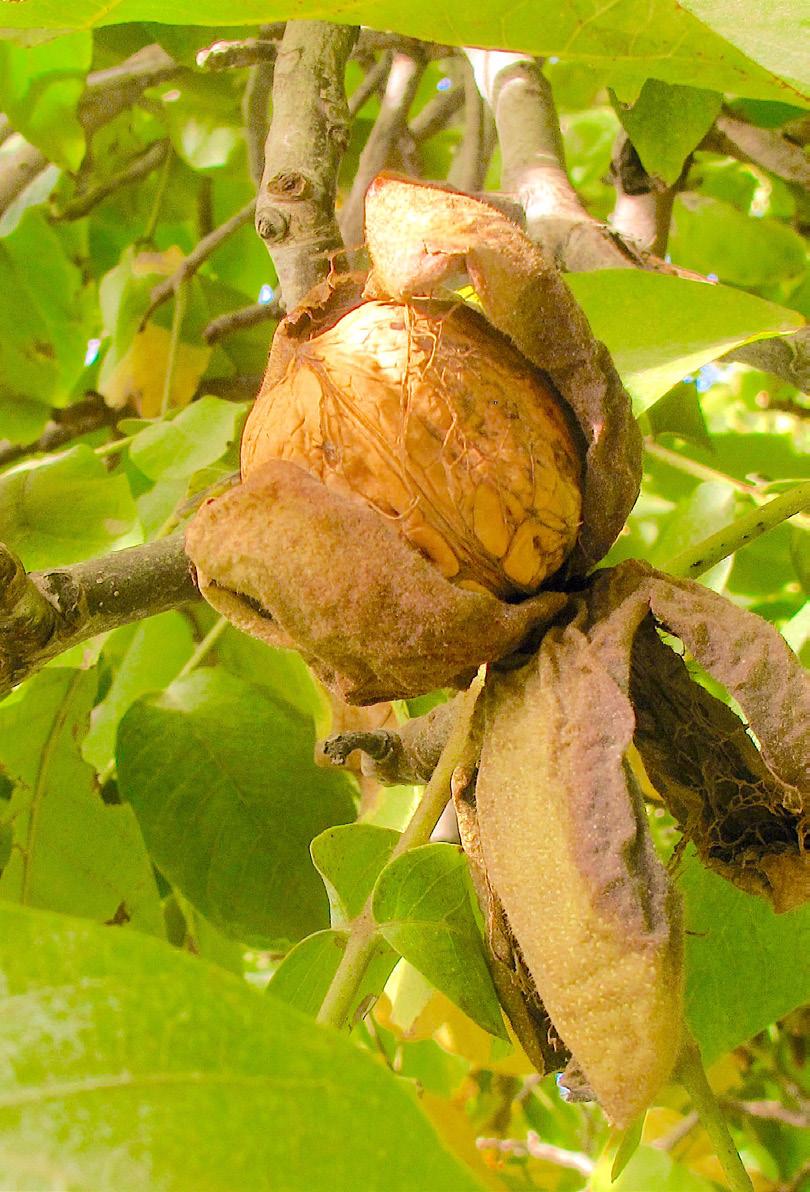
The critical role of pesticides in agriculture cannot be overstated, especially in California’s agriculture sector, which faces unique challenges due to climate change and the threat of invasive species. The Intergovernmental Platform on Biodiversity and Ecosystem Services reported that in 2019, invasive alien species posed a global economic cost exceeding $423 billion annually and were a significant factor in most plant and animal extinc-
tions. This underscores the importance of effective pest management strategies in safeguarding biodiversity and food production.
California’s agriculture is particularly susceptible to the adverse effects of climate change, which exacerbates the threat of invasive species. Pesticides play a pivotal role in combating these threats, ensuring the stability and productivity of the agricultural sector. However, the use of pesticides is
‘The research demonstrating the alternatives are safe, effective and economically viable should... be required to be publicly available before “priority pesticides” are eliminated.’
a complex issue, balancing the need for effective pest control against environmental concerns.
California agriculture is under constant attack from invasive pests and diseases. These non-native organisms, be it plants, insects, diseases or microbes, pose a significant threat to California’s ecosystems and food supply, and managing them has become a pivotal task for Western Plant Health’s (WPH) members.
Losses From Invasive Pests
California annually suffers over $3 billion in agricultural losses due to these invasive species. The magnitude of this problem cannot be understated, as both the U.S. and California Departments of Agriculture are mandated to protect against the invasion of exotic pests and diseases.
These invasive species are often introduced primarily unintentionally and accidentally but find fertile ground in California’s diverse ecosystems. These non-native species may have few natural enemies in their new locations, allowing them to become pests in the new environment. Often, the invasive population increases dramatically, overwhelming native species by
ContinuedonPage16
Whether growers produce organic or conventional products, Western Plant Health emphasizes the system choice should be at the grower's discretion, not mandated by the state.
14 West Coast Nut March 2024

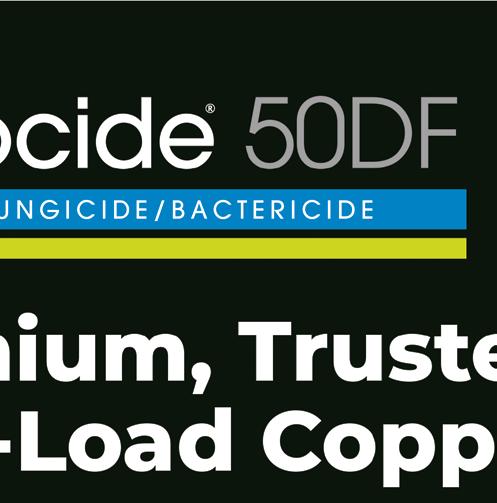


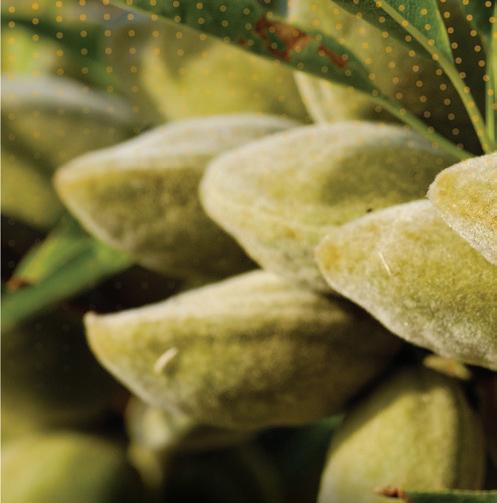
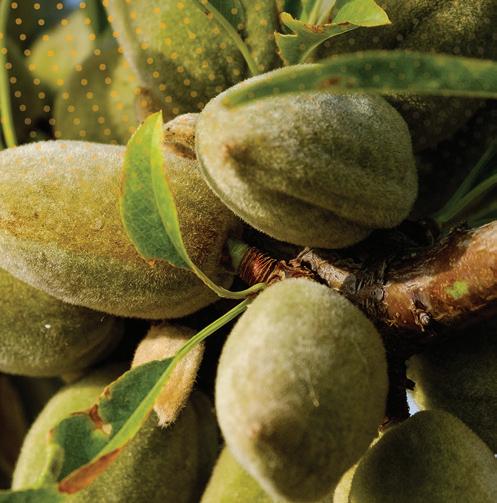















out-competing them for resources such as food, water, light and space.
These invaders can disrupt delicate ecosystems by endangering native plants, altering soil chemistry and affecting water systems. In some cases, invasive weeds can choke out native plants, which threatens the food and shelter of native animals.
The threat of wildfires can also be linked to invasive species. UC Riverside Center for Invasive Species states, “Invasive plants can also cause wildfires to occur more often and burn more intensely.” According to university researchers, including the University College London, California’s 2018 wildfires cost the U.S. economy $148.5 billion.
To stop the rapid growth of these pests and diseases, WPH members work with agricultural communities and local and state officials to employ a wide range of strategies that involve several modern tools and extensive research.
Leveraging modern science, WPH members have invested hundreds of millions of dollars in control products to manage invasive species populations. In addition, research into resistant crop varieties and integrated pest management strategies also offers promising pathways to safeguard California’s agriculture and natural habitats.
The battle against invasive pests and diseases is a continuous endeavor that demands concerted efforts from various stakeholders, including governmental agencies, the agriculture industry, WPH members, research institutions and the community. As California deals with the influx of non-native organisms, the goal remains clear: to protect its ecosystems from these relentless invaders while preserving the delicate balance that sustains our nation’s food supply and the region’s rich biodiversity.
Navigating the SPM Roadmap
The California Sustainable Pest Management (SPM) Roadmap is supposed to be at the forefront of addressing these challenges. It aims to promote
sustainable pest control methods that minimize environmental and community impacts and contribute to longterm agricultural sustainability. The SPM Roadmap is supposed to encourage the development of eco-friendly pest management strategies, yet it faces challenges, particularly in transitioning from current products to more sustainable alternatives.
The development and registration of new pesticides is a lengthy and costly process. Registrants spend hundreds of millions of dollars and often more than a decade to bring a new product to market in California. After its creation, the product must undergo a rigorous review process by the U.S. Environmental Protection Agency (US-EPA), which can take five to seven years to complete. After more than 300+ health and environmental studies have been completed for US-EPA, additional California-specific studies are required. These studies and California’s redundant evaluation of US-EPA work can add an additional five-plus years of review before a pesticide is approved for registration. This process, while ensuring public and environmental safety, does not facilitate the rapid availability of alternatives.
For the success of California’s SPM Roadmap and our food producers’ fight against increasing pests, it is crucial current pest control tools remain available until effective alternatives are registered and accessible. This includes the California Department of Pesticide Regulation (CDPR) working to register all products in the queue without bias towards certain groups’ preferences.
To avoid another situation where California eliminates an effective product before alternatives are available, CDPR should be required to provide in writing what alternatives are available. The research demonstrating the alternatives are safe, effective and economically viable should also be required to be publicly available before “priority pesticides” are eliminated.
Proposals to transition agriculture to “softer chemistries” is another complicated aspect of pest control that must be evaluated when replacing effective registered products with “softer chem-

istries.” This process often requires multiple product applications, which can then lead to resistance and potentially increase the agricultural sector’s carbon footprint due to additional tractor passes and pesticide applications.
Pesticide preemption is critical in California for ensuring consistency of statewide pest control, protecting food supplies and public health. The movement by activists for local pesticide regulations poses serious real-world risks because pests don’t respect community boundaries, they go where they want. Preemption ensures uniformity in pest management practices, preventing uneven approaches and their potential consequences, which can be more pronounced in urban settings where disease-carrying pests can have a more significant impact.
WPH advocates for science-based data in evaluating and registering pesticide tools, as stated in CDPR’s SPM Roadmap and Strategic Plan. A balanced approach, including input from all stakeholders, is crucial in the regulatory process. However, the availability and use of pest control tools must be recognized by the state as needed options for growers and not simply spoken and then forgotten. WPH members produce organic and conventional products, emphasizing that the system choice should be at the farmer’s discre-
ContinuedfromPage14
16 West Coast Nut March 2024
Renee Pinel, President/CEO, Western Plant Health
'The battle against invasive pests and diseases is a continuous endeavor that demands concerted efforts from various stakeholders, including governmental agencies, the agricultureindustry, WPH members, research institutions and the community.'
tion, not mandated by the state.
Over the past decade, the narratives around chemicals have become increasingly polarized. However, it is essential to recognize chemicals are integral to life. They are present in everything from bodily functions to our environment’s preservation. In agriculture, pesticides, when used responsibly, offer a solution to these pest threats, safe-
guarding our food supply and biodiversity.
Manufacturers of pesticides work with the CDPR to ensure responsible pesticide use based on scientific principles. The CDPR should focus on clearing its new, more environmentally friendly pesticide backlog. When used judiciously, pesticides are crucial against invasive threats and are vital for
protecting our food supply and biodiversity.
Chemicals and pesticides, often viewed with apprehension, are indispensable in our daily lives and maintaining ecological balance. Their role in agriculture, particularly in a state like California, is crucial. The challenge lies in balancing effective pest control with environmental and community concerns, which requires collaboration, scientific rigor and a commitment to a sustainable food supply.
Renee Pinel is the President & CEO of Western Plant Health (WPH), a Sacramento-based trade association whose member companies promote the environmentally safe and agronomically sound use of their products.
Comments about this article? We want to hear from you. Feel free to email us at article@jcsmarketinginc.com
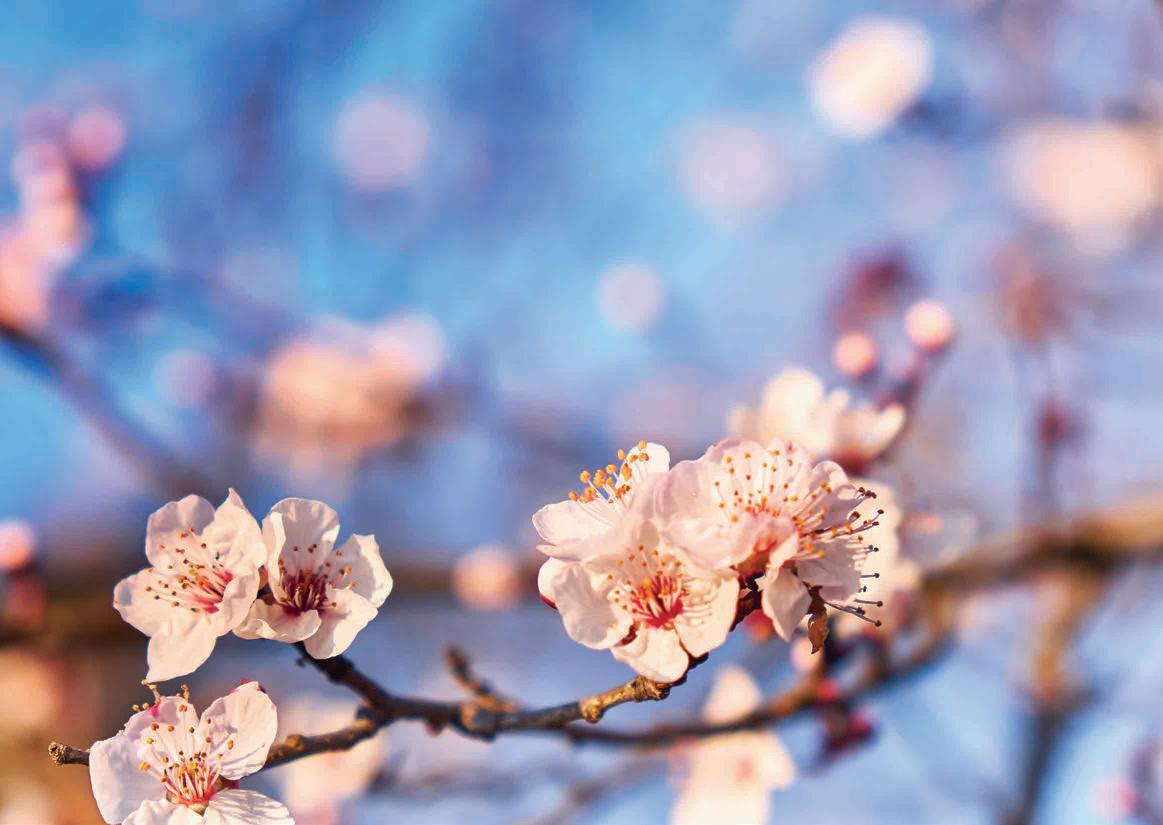
A unique Bacillus strain with multiple modes of action & broad spectrum control. A fungal & bacterial disease management tool that promotes plant health & immunity. A fungicide & bactericide with industry-leading stability & robust label. Do not spray while bees are foraging. PREVENT DISEASE WITH MULTIPLE MODES OF ACTION Merivon® 130 135 140 145 150 165 170 175 155 160 180 Diseased Flowers/1 Min. Search A B TREATMENTS C 2/17/2021 2/24/202 3/2/2021 Pink Bud Full Bloo Early PF BIOFUNGICIDES FOR ALMONDS 12% Decrease in Brown Rot Blossom Blight (Monilinia sp.) with Regalia vs. Merivon Alone • Eurofins, Sanger, CA, 2021 Untreated Merivon® 6.5 fl. oz. A BC Regalia® 1 qt./A A | Merivon® 6.5 fl. oz. A BC Stargus® 1 qt./A + Jet-Ag® 5% @ 1% v/v A | Merivon® 6.5 fl. oz. A BC IMPROVE BLOOM SPRAYS ©2024 Pro Farm Group, Inc. All rights reserved. March 2024 www.wcngg.com 17
Almond-growing family adds retail sales, food manufacturing as part of transition planning for the next generation
By VICKY BOYD | Contributing Writer
When the Sohnreys started their retail and food manufacturing businesses near Oroville, Calif., about nine years ago, they wanted to vertically integrate and capture more value from their crops. But launching Sohnrey Family Foods also was part of a transition plan to create new opportunities so the three sons, who are fifth generation, could join the family business. And they’re already looking to the sixth generation.
“All of us are entrepreneurial,” said Derek Sohnrey, who farms with his brothers, Alex and Andrew. “Now we’re going from three brothers to eight cousins, and we all want the opportunity for our kids to have what we have, so it’s a way to grow. That’s another reason for the gift shop. We started it already looking to the next generation.”
Adding retail and manufacturing wasn’t without its headaches as Derek called it “a whole ’nother beast compared to just growing crops.”
“We’re farmers, and retail is difficult,” he said, laughing. “We learned that extremely well and fast once we dove into that market. There aren’t many slow times for us anymore. Between planting and harvesting, the slower months we used to have are now tied up with retail, which is fine. It’s just busy. We like to be busy.”
Five Generations of Growers
Derek’s great grandparents headed west from Kansas with a wagon and mule team in the early 1900s and
“WE WORK SO HARD TO PRODUCE THESE CROPS, WE’D LOVE TO SEE PEOPLE ENJOY THEM AND BE ABLE TO VERTICALLY INTEGRATE AND CUT OUT SOME MIDDLEMEN. WE’RE ADDING VALUE AND CONTROLLING OUR OWN DESTINY A LITTLE BIT.”
- DEREK SOHNREY, SOHNREY FAMILY FOODS
settled in the northern Sacramento Valley. Over the years, the family has produced a myriad of commodities, including rice, almonds prunes, walnuts, beans, hay, row crops, cattle, bees and catfish.
Today, the Sohnreys grow almonds and rice, since the timing of cultural practices for each crop tends to be


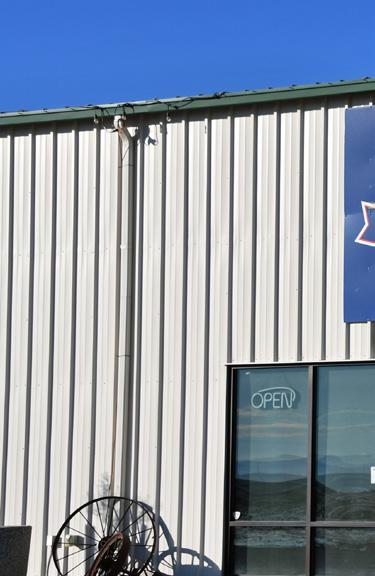

ContinuedonPage20
18 West Coast Nut March 2024


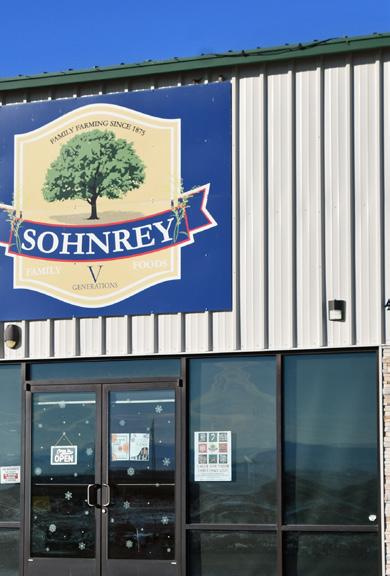





 Derek Sohnrey and his family started a gift shop off Highway 99 near Orland in 2014 as a way to add value to the crops they grow (all photos by V. Boyd.)
Derek Sohnrey and his family started a gift shop off Highway 99 near Orland in 2014 as a way to add value to the crops they grow (all photos by V. Boyd.)
March 2024 www.wcngg.com 19
Derek Sohnrey sees the gift shop as an opportunity to educate consumers about agriculture and the benefits it provides.
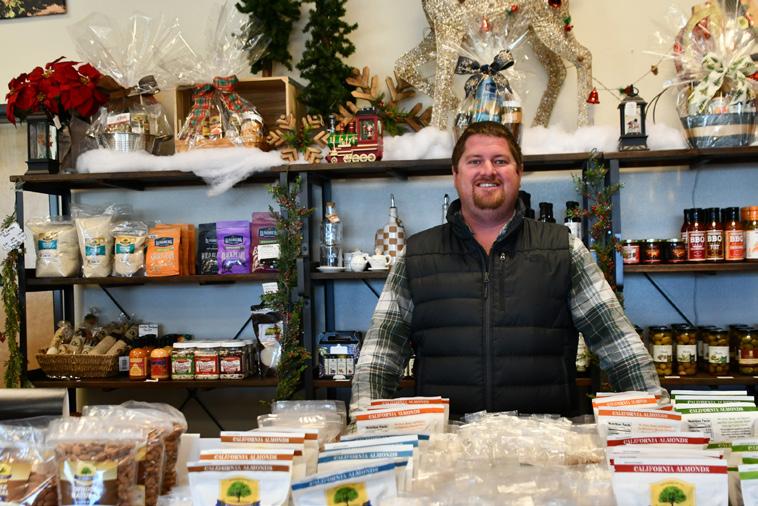
ContinuedfromPage18
complementary and allows them to make the most of their employees. Their father, Greg, who is fourth generation, has
stepped back from day-to-day operations but still helps out when needed. Their cousin, Mike Sohnrey, is also part of the business and grows walnuts and prunes.
The Sohnreys farm fields and orchards from just south of Chico to near Beale Air Force Base in Yuba County.


Derek pointed to his father for laying a foundation for their success that involved providing each son with real-life farming lessons and renting them ground.
“We had to set it up and get a loan, but it made all the difference in the world,” Derek said. “It also made us hungry to expand and get more ground.”
Greg said he was pleased that all three sons decided to follow in agriculture. “All three boys are working here and doing a good job,” Greg said as he helped out in the back end of the gift shop during the busy holiday season.
Taking the Retail Plunge
The family had been talking for some time about making the plunge into retail. When Derek graduated from Chico State University and returned to the farm, they figured the timing was right.
“We work so hard to produce these crops, we’d love to see people enjoy them and be able to vertically integrate and cut out some middlemen,” Derek said. “We’re adding value and controlling our own destiny a little bit. Being able to see our work go from a baby almond tree all the way to an adult almond tree and into the mouths of our consumers and customers adds another layer of pride into the work we do.”
The Sohnreys founded the retail business in 2014 and at the time had another company apply flavorings to their almonds. But Derek said they weren’t happy with the quality and decided to start their own food manufacturing business a year later.
The food manufacturing facility, which has already undergone an expansion, sits in a building adjacent to the
20 West Coast Nut March 2024
Derek Sohnrey shows off some of the nut-related products they sell in their gift shop during the holidays. About five times a year, Derek’s cousin Brenda Sohnrey and aunt Sylvia Sohnrey redecorate the shop to keep things fresh.
gift shop just off Highway 99 near Oroville. Derek’s cousin, Cyrus Fountain, develops the flavors “through a lot of trial and error and a lot of taste testings at family get-togethers. And I do a lot of research on my own.”
Over the years, he’s come up with a host of sweet and savory flavors as well as limited-edition ones, like orange crème- and pumpkin pie-flavored almonds. They also produce almond butters in four flavors: snickerdoodle, which Fountain said was based on his mom’s Snickerdoodle cookies, chocolate, maple and natural.
Although Fountain said he has no formal chef or food technology training, he likes to cook and experience new flavors. He also is responsible for the gift shop’s back end, forecasting retail production, and ensuring gift baskets and boxes are assembled on time. In addition, Fountain oversees shipments for their online customers.
Retail: ‘A Whole ‘Nother Beast’
About five times a year, Derek’s cousin Brenda Sohnrey and aunt Sylvia Sohnrey redecorate the gift shop to keep things fresh. Along with gift shop manager Ashlee Smith, they also attend trade shows and other events to stay up to date on the latest consumer trends.
The brick-and-mortar gift shop and online store at www. sohnreyfamilyfoods.com are just part of the Sohnreys’ retail efforts. They also sell through local grocery stores and an Amazon storefront.
What they don’t grow and produce themselves, they try to source locally. In fact, about 80% of the items they sell in the gift shop and online are made by small, local businesses. Only a few items used to fill out gift baskets, such as stuffed animals or cutting boards, are manufactured elsewhere.
Dealing with the different labor requirements on the retail side is something the Sohnreys have had to adapt to over the years. The jobs, for example, differ from those on the farm.
During slow times, they try to keep people employed while during busy months, trying to hold onto workers “is always fun to deal with,” Derek said.
He admitted the retail side won’t make them rich, at least in the near future, but the family remains committed to it because of other intangible benefits.
“The reason we keep it is we’re providing nine to 11 fulltime jobs, with my cousin being one of them,” Derek said. “And we have a big impact on the community and other small businesses. For some of these small businesses, we’re their biggest seller.”
He also sees the gift shop as an opportunity to educate consumers about agriculture and the benefits it provides. As an example, Derek pointed to adjacent harvested rice fields flooded during the winter. Frequently, they’re filled with noisy geese and other waterfowl feeding on rice leftover after harvest.
“It helps make that connection, and once they make that connection, they don’t forget,” Derek said. “It’s not just good for us, but it’s good for all of ag.”
While their retail business continues to grow, Derek said they still sell the bulk of their crops through more traditional
wholesale outlets like Blue Diamond Growers, Riverwest and Bear Republic Nut for their almonds and Pinnacle Rice Coop for their rice.
Attention to Detail in the Field
The same attention to detail they use in the gift shop and food facility also is applied to their crops. They currently use drones and satellite imagery to get a birds-eye view of potential problems in their rice fields.
In their almonds, they use moisture sensors to gauge irrigation timing. They also use pressure bombs and the online Pressure Bomb Express to make sure the water in the soil makes its way into trees and they aren’t water stressed.
In 2023, Derek said they tried a FloraPulse microtensiometer in one orchard, and he planned to add two more units this season. The sensor, installed in a small wound made in the tree trunk or scaffold, measures how much tension the tree is using to move water from the soil through the xylem, or water-carrying tissue. It reports stem water potential readings every 20 minutes.
“For us, the pressure bomb itself is nice, but it’s so labor intensive that it’s hard to be consistent with it,” he said. With the FloraPulse, Derek can pull up readings anytime on his phone to determine whether the tree needs additional irrigation or is fine.
Comments about this article? We want to hear from you. Feel free to email us at article@jcsmarketinginc.com

March 2024 www.wcngg.com 21
MOOD AT WINTER HAZELNUT MEETING LIFTED BY PACKER BONUSES
By MITCH LIES | Contributing Writer

News that packers were paying hefty bonuses for hazelnuts helped put a positive spin on the 2024 Winter Meeting of the Nut Growers Society of Oregon, Washington and British Columbia, held January 11 in Salem, Ore.
Terry Ross of the Hazelnut Growers Bargaining Association said developments in Turkey, the largest hazelnut-producing country in the world, dramatically lowered world crop expectations and helped prompt three of the state’s largest packers to offer bonuses for the 2023 crop.
Ross noted crop estimates from Turkey dropped from around 800,000 tons to 600,000 to 650,000 tons as growers there struggled with stink bugs and weather issues. “There are still reports coming from the grower side that it’s 400,000 tons,” Ross said. “The marketers are saying it’s 700,000 tons. But when you look at what is happening within the marketplace, supply and demand tell you generally where it has fallen, and the 600,000- to 650,000-ton range is logical.”
Weather events and stink bug infestations also have reduced the crop in Italy, the second largest hazelnut producing country, from an estimated 110,000 tons to between 80,000 to 90,000 tons, Ross said. In addition, crop projections have decreased in Azerbaijan, Chile
and Geogia within the last few weeks.
“We lost about 225,000 to 250,000 tons of potential crop supply,” Ross said. “So, that wiped out our excess and got us down to a very healthy place where prices are starting to improve dramatically.”
Coming after two years of poor prices and in some cases low yields, the news of the bonuses was greeted warmly by the 750 to 800 growers and others who crowded into the Salem Convention Center for the annual winter meeting.
Another factor affecting the hazelnut price, Ross said, is world economies are more vibrant today than at any time since 2019. “Nobody was going to build any new product lines and take a risk entering into the marketplace in a COVID-19 situation,” Ross said. “Now, those things are starting to happen, and we’re getting back to normal, we hope. The different economies are starting to fire back up, and it appears we’re heading back into a situation possibly where total supply is starting to fall and potential consumption is starting to increase.”
Ross also addressed an issue on the forefront of growers’ minds in recent years: That being that Oregon growers overplanted hazelnuts. “That is not why the prices softened recently,” Ross said. “We are still pretty small in comparison
“We lost about 225,000 to 250,000 tons of potential crop supply. So, that wiped out our excess and got us down to a very healthy place where prices are starting to improve dramatically.”
- Terry Ross, Hazelnut Growers Bargaining Association
to the world’s hazelnut production.”
Despite the fact that Oregon’s hazelnut acreage increased from less than 30,000 in 2008 to around 93,000 acres in 2023, that still represents a small part of world supply, he said. For
ContinuedonPage24
Between 750 and 800 people crowded into the Salem Convention Center for the Winter Meeting of the Nut Growers Society of Oregon, Washington and British Columbia.
22 West Coast Nut March 2024



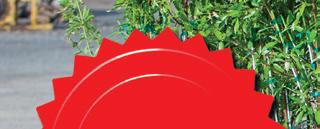




























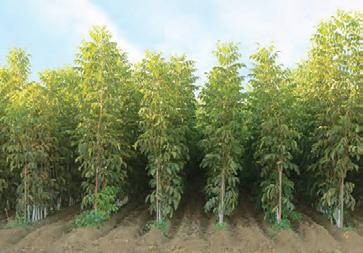
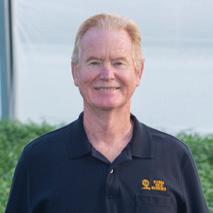

































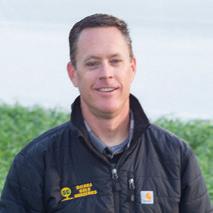

Sierra Gold Nurseries • (530) 674-1145 • sgtrees.com BEST CLONAL HYBRID ROOTSTOCKS PISTACHIOS WALNUTS ALMONDS CONTACT YOUR LOCAL FIELD REPRESENTATIVE PAUL SMITH Butte, Glenn, Tehama & Shasta (530) 517-9338 paul@sgtrees.com BOB FURMIDGE Yuba, Sutter, Colusa, Yolo, Solano, Sacramento & Placer (530) 755-7139 • bob@sgtrees.com RANDY FASANI San Joaquin, Stanislaus, Merced & Madera | (209) 988-7333 randy@sgtrees.com JOSH BERGMAN Fresno, Kings, Tulare & Kern (559) 260-6551 josh@sgtrees.com MATTHEW “BUBBA” HADDON Fresno, Kings, Tulare & Kern (661) 747-3967 • matthew@sgtrees.com Almonds · Walnuts · Pistachios EXPERIENCED ONSITE FIELD SERVICE TO HELP YOU AT EVERY STEP
example, Ross said, growers in Turkey produce hazelnuts on roughly 2 million acres.
“So, if we go from 25,000 acres to 100,000 acres of production, it does not make a difference to the world market,” he said.
New EFB Strain
News of the price increases helped offset a disturbing revelation from an afternoon panel that a new strain of Eastern Filbert Blight (EFB) has overcome the resistance conferred by the Gasaway gene, which Oregon State University breeders used to develop many of the EFB resistant varieties currently in production, including the latest release, Thompson.
OSU Extension Orchard Specialist Nik Wiman, one of four panelists, said growers in the Woodburn area, where the new strain appears to have emerged, need to start thinking about spraying for EFB and cutting out diseased limbs, regardless of which variety they are growing.
“It pains me to encourage people to increase our fungicide use,” Wiman said. “But if you are close to the current epicenter, you definitely need to implement a strong EFB program.”
The panel session included a history lesson, where OSU Plant Pathologist Jay Pscheidt showed how EFB moved more than 120 miles from north of Vancouver, Wash. to the
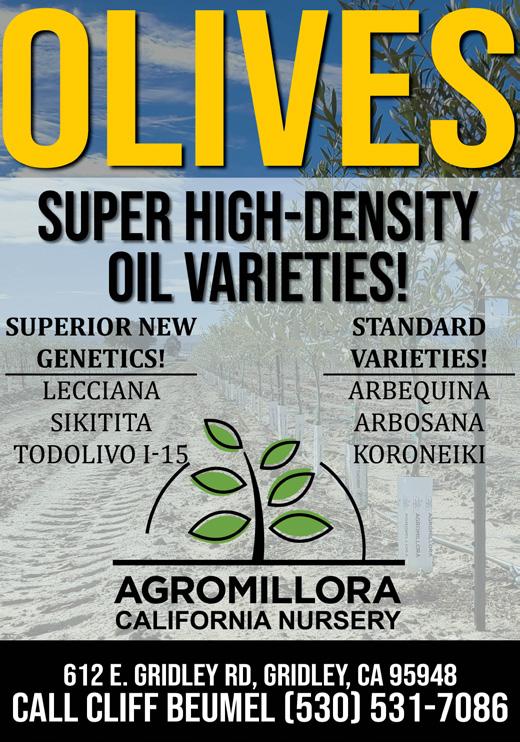
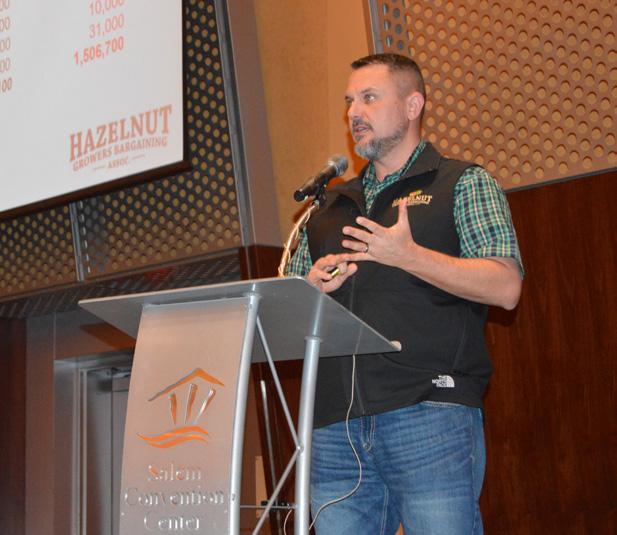
southern end of Oregon’s Willamette Valley in a matter of a few decades.
Jeff Newton, a grower and one of the panelists, urged growers and consultants to monitor for EFB presence in their orchards and treat for it before the disease has a chance to get a foothold in the valley.
Crop Management
Earlier in the meeting, another panel, this one made up of agronomists, addressed the topic of how to manage crops in times of tight budgets. Raymond Seal, agronomist for Marion Ag Services, said he typically gets two responses from his growers in lean times.
“One of the responses I get from customers is I’ve got to tighten my belt,” Seal said. “And that means trimming down the fat wherever I can. Where can I save costs and start looking at pinching pennies? And the other response that I think achieves the same thing but in a different way is I’m going to focus really hard on the important stuff.”
Seal said he views orchard maintenance as a critical management practice that needs to be done regardless of budgets. “The maintenance needs to be there, for sure. So, you can let soil go for a little bit if you’ve got built up fertility, but you don’t want to take that too far. Same thing with pruning. In my mind, you want to keep your cycle of pruning going.”
The idea, he said, is when prices improve, growers have a solid foundation to work from in their orchards.
Tawny Buck of Nutrien Ag Solutions agreed with what Seal said and noted the long-term nature of hazelnut orchards complicates issues in that what a grower does one year will affect production three to five years down the road.
“That makes it really hard for growers to make decisions,” Buck said. “A lot of guys, they don’t want to scale back. They don’t want to pull back on inputs. They want to keep putting inputs back into their orchard and keep investing into that
ContinuedfromPage22
24 West Coast Nut March 2024
Terry Ross of the Hazelnut Growers Bargaining Association provides an update on hazelnut prices during the Nut Growers Society Winter Meeting. Ross reported three of Oregon’s largest packers were paying bonuses.

long-term crop.”
“We’ve had to make some tough decisions on our end of things between fertilizers and chemicals,” said Buck, who also produces hazelnuts. “We’ve had to make some lists prioritizing
where we put the dollars. Do we put it more into this orchard? Do we put it more in here?”
Buck said she has been focusing on maintaining the tree health and maximizing return on investment. “It’s
not necessarily always getting that last nut to produce if it doesn’t pay,” she said. “So, we’re focusing on return of investment.”
Dustin Welters, a crop consultant for Pratum Co-op, pointed out taking care of soil pH is essential to maintaining yields in lean or good times. “pH is kind of the base of your plants’ ability to uptake those nutrients in the soil,” he said.
Welters said it is also critical to maintain adequate potash levels in soil. “A lot of my tissue samples are deficient if not severely deficient in potash,” he said.
Michelle Armstrong of Wilbur-Ellis noted keeping up soil moisture is also critical at all times, regardless of budgets. “Keep in mind, if there is not moisture in soil, your nutrients aren’t available. It doesn’t matter how many nutrients are there; if the tree can’t uptake it, it doesn’t really matter.”
Comments about this article? We want to hear from you. Feel free to email us at article@jcsmarketinginc.com

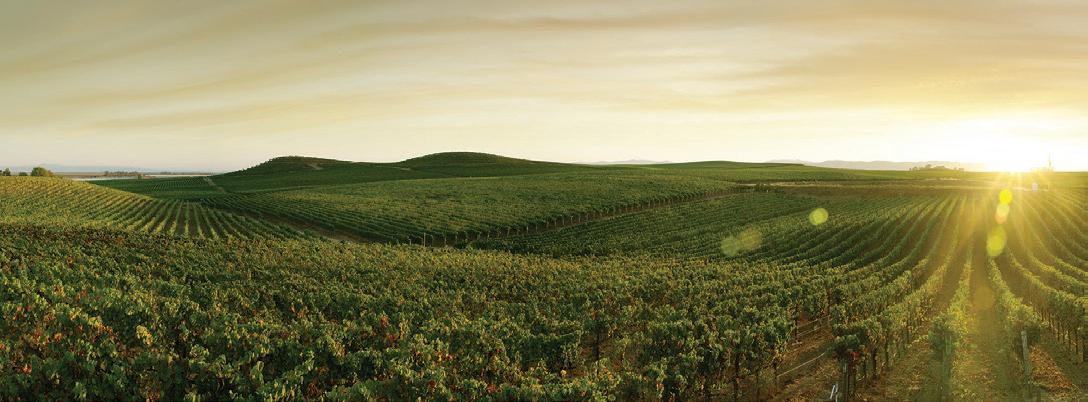





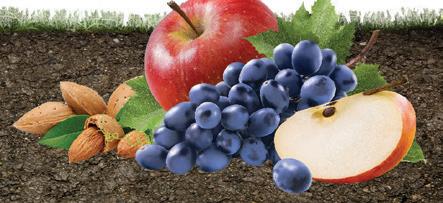


400 S 200 E, EMERY, UT 84522 | (435) 286-2222 | (800) 846-2817 CALL ERNIE AT (661) 304-2676
March 2024 www.wcngg.com 25
From left, panelists Raymond Seal, Dustin Welters, Tawny Buck and Michelle Armstrong talk hazelnut crop inputs during the Nut Growers Society Winter Meeting on January 11 in Salem, Ore. (all photos by M. Lies.)
California Walnut Growers Face Tough
Times With Tough Decisions
By CECILIA PARSONS | Associate Editor
Of all the challenges facing California walnut growers, market uncertainty may be the toughest to overcome. A record-size 2023 crop, below break-even prices for growers and higher input costs are placing many walnut growers in precarious financial positions.
Pricing is forecast to be under pressure until tonnage approaches an estimated 625,000 tons
At the 52nd annual Tri-County Walnut Day in Tulare, it was noted “some growers are out of business, but they just don’t know it yet.”
As of September 2023, California Walnut Board, via a Land IQ acreage survey, showed an estimate of 375,578 producing walnut acres. Non-bearing acreage estimate totaled 35,206. An estimated 6,590 acres were listed stressed or abandoned.
Low returns for walnuts in recent years has sparked record numbers of orchard removals. The Land IQ survey showed from October 2022 to August 2023, 28,910 acres were removed from production.
Bob Beede, UCCE farm advisor emeritus, said few if any of the pulled
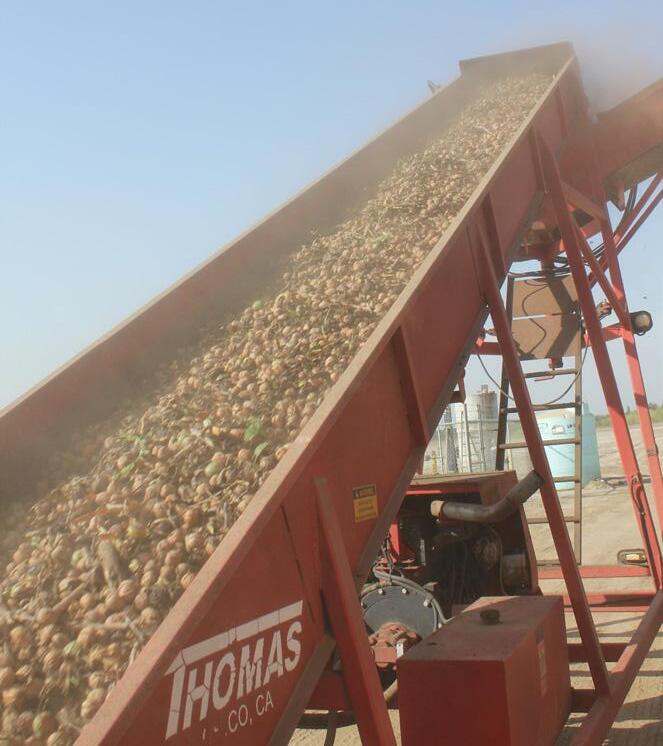
orchard sites are being replanted with walnuts. Other crops, notably pistachios, were being considered as replacements, but there is concern the acreage limit has been reached on this nut as well.
Beede noted more walnuts were coming out of the ground in the south San Joaquin Valley than the north. The south still has Serr and Vina, which have fallen out of industry favor due to insufficient light meats. Recent years of drought, high summer temperatures and inadequate winter chill have also contributed to young orchard removals.
While walnut growers may decide to keep farming and hope the prices they receive for their crop improve, Beede pointed out several considerations: The cost to farm walnuts is estimated at $2,600 to $3,000 an acre; water availability and cost; adequate winter chill; the effect of hot temperatures on walnut quality; and the condition of growers’ farm equipment, irrigation wells and orchards.
Questions remain about the possibility of government assistance and the time it will take before walnut prices climb back to at least 90 cents. At 6,000
pounds per acre, 45 to 50 cents a pound is about break-even, Beede said.
Crop Removal an Option
One option proposed for walnut growers to save production and harvest expense is to remove the crop with a plant growth regulator (PGR). Removal could save water and nutrient costs, eliminate pesticide and fungicide applications and cut out harvest and hauling costs.
Beede said walnut flower and fruit removal experiments were done in 1985-88 by UCCE farm advisor Bill Coates in San Benito County and UC Davis Pomology Professor George Martin. The trials were conducted in the Hollister area on three- to fouryear-old Pedro and Howard trees. Flower removal was intended to reduce early Cherry Leafroll virus (Blackline) infection sites near the graft union. Reduction in early fruit set on the highly precocious new cultivars like Ivanhoe was also intended to solve the early stunting problem by providing more photosynthates to the shoots.
The PGRs tested were NAA (Auxin) gibberellic acid and ethephon (Ethrel).
Cost to farm walnuts ranges from $2,600 to $3,000 per acre annually.
26 West Coast Nut March 2024

Timings tested were full bloom up to 3.5 weeks post full bloom. Only ethephon justified further evaluation.
In 1986, Coates and Martin reported newly set nut removal with ethephon was 100% at both 2 and 4 pt./100 gallons water, but tree growth was inhibited more at the higher rate. There was also some phytotoxicity reported. Their report stated the 4-pint rate caused excessive foliar phytotoxicity, but 2 pints resulted in only slight to moderate foliar injury.
In 1988, ethephon applied to young Howard trees at 1 pt./100 gallons water one week after full bloom resulted in only 79% nut removal with slight phytotoxicity and reduction in growth. Treating three weeks after full bloom resulted in 100% nut removal with similar phytotoxicity and reduction in growth to the early treatment. The reduction in shoot growth from ethephon conflicted with their objective of achieving improved vigor from crop removal, so further testing was discontinued.
Beede acknowledged the experi-





ContinuedonPage28 Kraemer & Co. Mfg., Inc. Almonds • Pecans • Pistachios Walnuts Let Kraemer & Co. Design and Build the Facility that is Right for Your Needs Nut Drying & Storage Facilities 3778 County Road 99 W Orland, CA 95963 530-865-7982 │ Fax: 530-865-5091 CA Cont. Lic. #485-547 │ Web: www.kcomfg.com • Burners • Fans • Drying Systems • Storage & Handling • Custom Manufacturing • Spiral E-Z Let Downs • Installation & Service • Knock Down Kit • Modular • Corrugated / Galvanized Construction • Do-It-Yourself Option • Low Lead Time • 6 Ton Capacity Walnut Drying Bins
March 2024 www.wcngg.com 27
More
walnut orchard removals have been in the south San Joaquin Valley than the north (all photos by C. Parsons.)

ContinuedfromPage27
mental status of this old research, and told growers there has been no current testing by UCCE or others to determine if the rates and timings investigated by Coates and Martin on young trees produce similar results on mature trees in the Central Valley. Growers perceiving significant financial benefit from trying an estimated 2 pt./100-gallon rate might wish to consider it rather than orchard removal. Growers would assume all risk.
“Growers could legally treat newly set fruit if the current label allows application prior to the registrant’s supported use at packing tissue brown, and there is no additional restriction imposed by them,” Beede said. The fruit set appli-
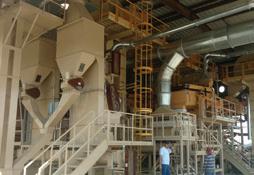
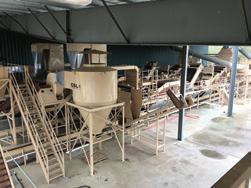
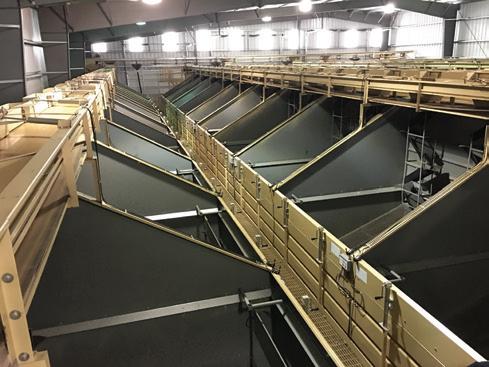
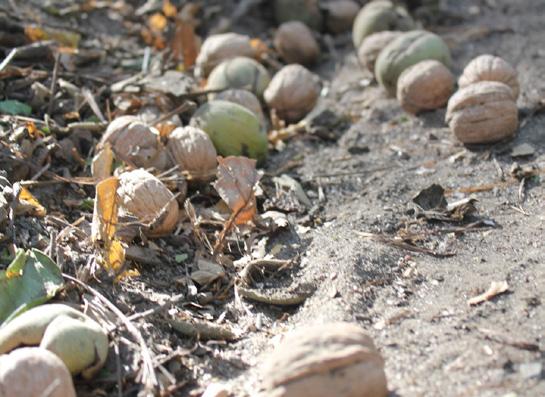
cation timing could be allowed by the registrant, but not supported.
Ethephon is currently registered on walnuts for application at or after packing tissue brown (PTB) to advance hull maturity and harvest date. Due to its acidity and potential for serious eye injury, it is a Category 1 material. Beede later reported the Kings County Ag Commissioner’s office supported his request to DPR for an ethephon label interpretation to determine if treatment after fruit set would be a violation of the label. DPR responded that it was not.
“Current testing on large trees and our main varieties is obviously needed to provide growers confidence that this is a viable tool to further reduce cultural costs,” Beede said. “But my conversations with growers indicate many have their backs against a financial wall that is unprecedented. They have reached the point of having to cut the trees down and leave them in place or simply abandon the orchard. This creates problems for neighbors still struggling to farm.”
Spending the money on crop inputs necessary to achieve a high-quality walnut crop is difficult to justify with the current walnut prices, Beede noted. A base price isn’t guaranteed by the processor. In the past, he said, there was a base price and then bonuses for delivering large, light-colored walnuts. Variety of nut also matters. Beede said processors will take Tulare and Chandlers, but many don’t want to handle other varieties.
Removals Expected to Continue
Robert Verloop, executive director and CEO of California Walnut Board and Commission, said walnut orchard removals are expected to continue with few new plantings in the near term. Most of those removals, he said, are older orchards with yields less than 4,500 pounds per acres. The removals are also mainly less-desirable varieties with fewer productive Chandler, Tulare and Howards being removed.
The big question he addressed in his Walnut Day presentation is if the industry has hit bottom and how long before prices move up.


Consensus is the California walnut crop needs to be 625,000 to 675,000 tons to be in balance with demand. The current production exceeds 800,000. Carryover also remains high at 141 tons. While removals are likely to continue, Beede noted at the orchard removal rate, it could take up to six years to achieve balance.
“Pricing will remain under pressure through 2024. We
WALNUTS & ALMONDS WALNUT AND ALMOND PROCESSING EQUIPMENT Contact Us Today 3200 TU LLY ROAD, H UG H SON, CA • G ro ssi fa b r i ca ti on.co m 20 9.8 83.28 17 Serving the California Walnut & Almond Industry for over 25 years. Custom Sizing to Fit Your Needs CONTACT US TODAY TO GET A QUOTE FOR THE BEST PRICES • Receiving • Precleaning • Hulling • Drying • In-Shell • Shelling • Eletronic Sorting • Hand Sorting • Packaging Receiving • Precleaning • Hulling In-Shell • Shelling • Almond Drying • Eletronic Sorting • Hand Sorting Packaging • Walnut Equipment Almond Equipment
justify.
Crop inputs to achieve high quality are difficult to
28 West Coast Nut March 2024
Walnut pricing is expected to remain under pressure through 2024.
seem to have hit bottom, but how wide is the valley before things significantly move up?” Verloop said. He noted the 2023 walnut crop was notable for quality.
Looking at the global walnut picture, California produces 26% of the world’s walnuts down from 29% in 2017-18. China and Chile production grew with China producing 53% up from 42% and Chile producing 7% up from 5%.
California walnuts’ share of world trace dropped from 68% in 2016-17 to 44% in 2021-22. China and Chile both grew market shares. Consumption of walnuts remains flat, and the expectation of India as the next great market has not been realized.
Verloop said challenges in the global market place include the tariffs and duties on California walnuts. India removed a retaliatory tariff on California walnuts last summer, but it will take time to rebuild that market, Verloop said.
An overreliance on the assumption that demand for walnuts will always be there, a compressed California marketing window and a global walnut supply that outpaces global demand are some of the challenges facing the California walnut industry.
Processors need to shift their approach from suppliers of a commodity to partnerships and listen to consumers and customers, Verloop said.
The California product is competing with China’s high edible meat yield, and proximity to key markets. Chile’s emerging production is perceived as very light in color, larger-size nuts and high edible meat yield. In comparison, California walnuts are perceived in the world market as being smaller with lower meat yield.
“Chile has succeeded in establishing export sales and we compete with that,” Verloop said. As acreage of early harvested California walnuts shrinks due to orchard removals, Chile has moved into that Christmas holiday market.
Opportunities remain for the California walnut industry, Verloop said, but it will take some changes in marketing strategies. Innovations include preserving ‘freshness’ by improved postharvest storage, handling and packaging protocols. Reducing
bitterness and improving walnuts as a preferred food ingredient. New product development and improved crop estimation will also benefit growers.
The new USDA Regional Agricultural Promotion Program may also offer some financial assistance to the walnut industry.
The program is intended to provide assistance to eligible organizations that conduct market promotion activities, including activities to address existing
or potential non-tariff barriers to trade, and to promote U.S. agricultural commodities in certain foreign markets. Priority markets include south and southeast Asia, Africa, South America and Middle east.

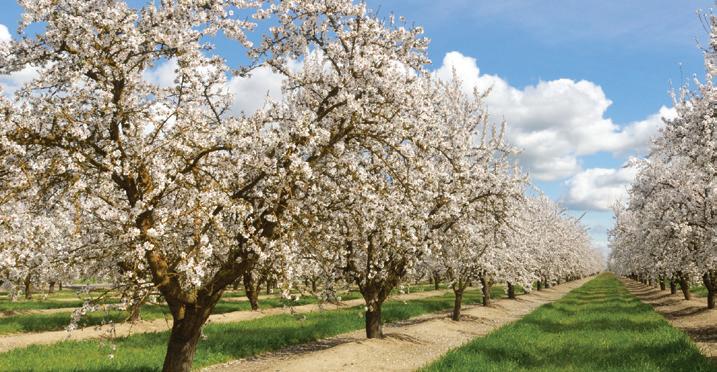


W S H N NSTAEDE M NTOFAG ERU ORGA C PROGRAM REGISTERED INPU MATERIAL (760) 599-8855 • www.san-agrow.com SAN Agrow offers effective plant nutrients, biopesticides and specialty inputs designed to optimize crop production. Contact us today to learn more! SOLUTIONS FOR SUSTAINABLE CROP HEALTH AND NUTRITION Comments about this article? We want to hear from you. Feel free to
us
article@jcsmarketinginc.com March 2024 www.wcngg.com 29
email
at
View from the Top
A New Turn of Leadership
Blake Vann, the new chair of the Almond Alliance of California, knows what’s needed and where to focus.
By CATHERINE MERLO | Contributing Writer

Blake Vann had only been on the board of the Almond Alliance of California for a year when his fellow directors elected him chairman last December.
Although Vann had never before served as chairman of an industry group, it was clear he brought deep-rooted experience and credibility to the table. The other directors understood that being new to the board didn’t mean new to the industry.
Vann is CEO of Vann Brothers, a family-owned, vertically integrated tree nut operation near Williams, a small town about 60 miles north of Sacramento. It’s a business woven into the life of this 42-year-old native Californian.
His father Garnett Vann and uncle, Bill Vann, planted their first almond trees in 1996 near Williams. They later built a processing facility and a huller-sheller. Their annual almond volume grew from 9 million pounds in the early days to 80 million today. The Vanns’ operation now handles almonds from 150 growers and counts 300 employees. There’s the growing and harvesting side of the business. From there, the almonds head to the family-owned Yolo Hulling and Shelling. Finally, they’re transported to Vann Family Orchards for processing and packaging for domestic and export markets. The family also grows walnuts, pistachios and some rice.
“I’m fortunate to see the whole spectrum, from the growing side to
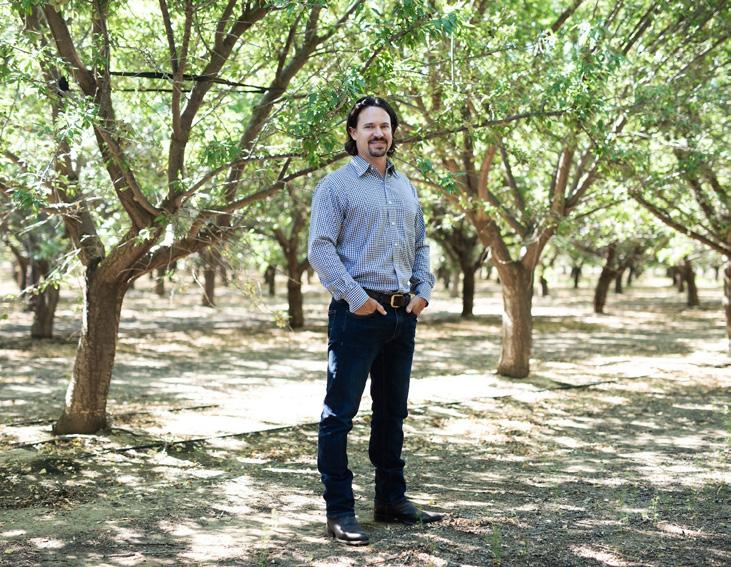
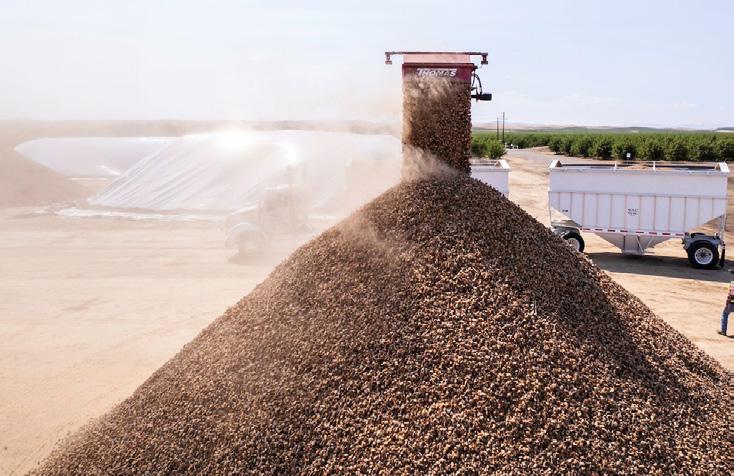 “We started as growers,” says Blake Vann of his family’s tree-nut operation. “That’s where our roots are” (photo courtesy Vann Brothers.)
“We started as growers,” says Blake Vann of his family’s tree-nut operation. “That’s where our roots are” (photo courtesy Vann Brothers.)
30 West Coast Nut March 2024
Incoming almonds are unloaded at Yolo Hulling and Shelling, part of the Vanns’ integrated operation near Williams, Calif. (photo courtesy Vann Brothers.)
"People are choosing not to plant almonds. I would rather see our existing and emerging markets grow consumption than lose acreage
-Blake Vann, Vann Brothers
hulling and shelling to processing and marketing,” Vann said. “But we started as growers. That’s where our roots are.”
Moreover, Vann comes to Alliance’s chairmanship with a degree in inter national business from California State
University, Sacramento. He also is a graduate of the California Ag Leader
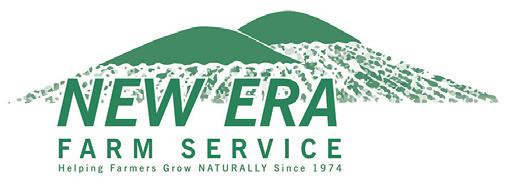
the pike in California, especially for plastics, pesticides and postharvest fumigation. Microplastics have become and our government. Plastic is involved
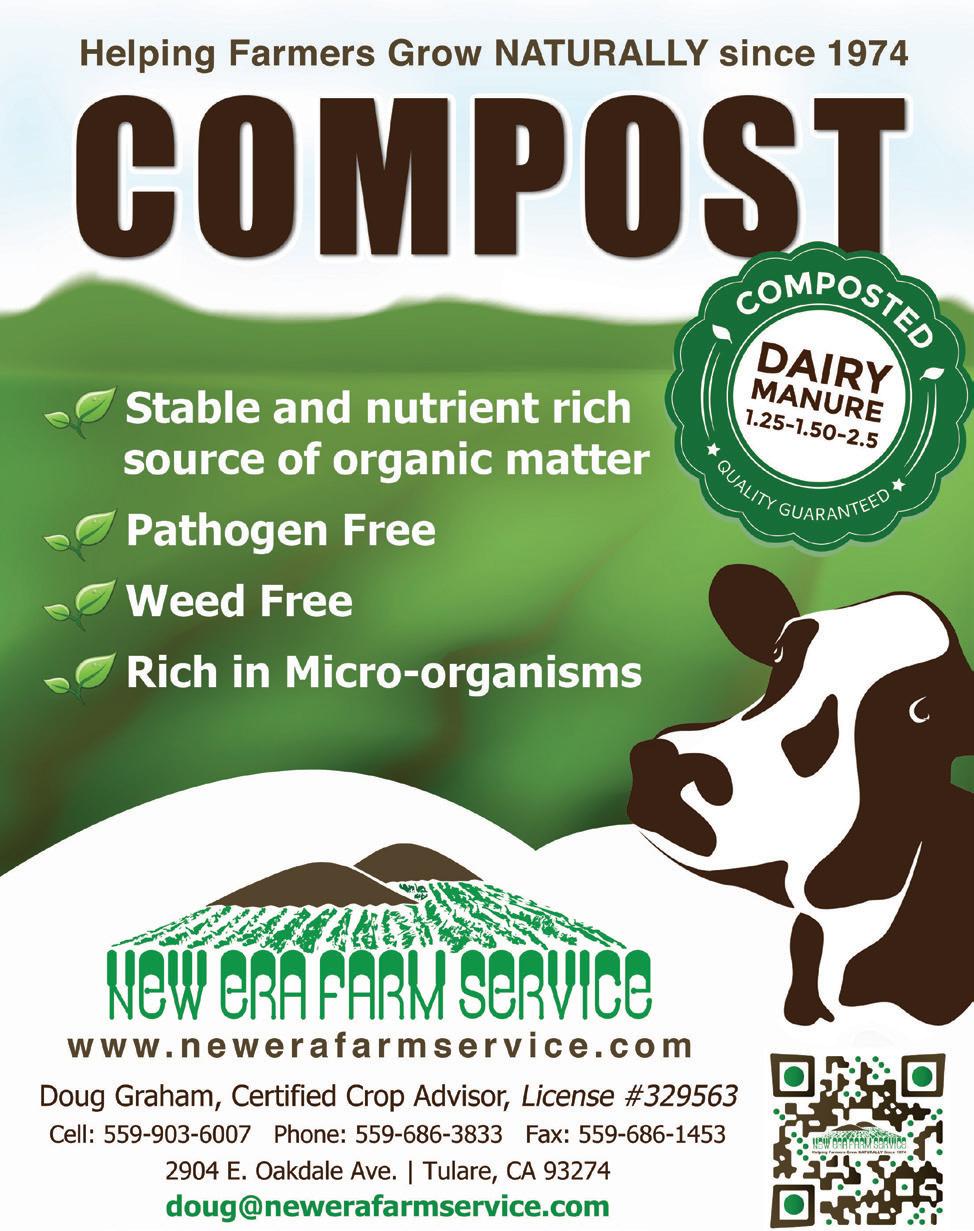
It’s a tough, tough time. So, it’s a really added regulations and the costs associ-
supply and demand, so the market will


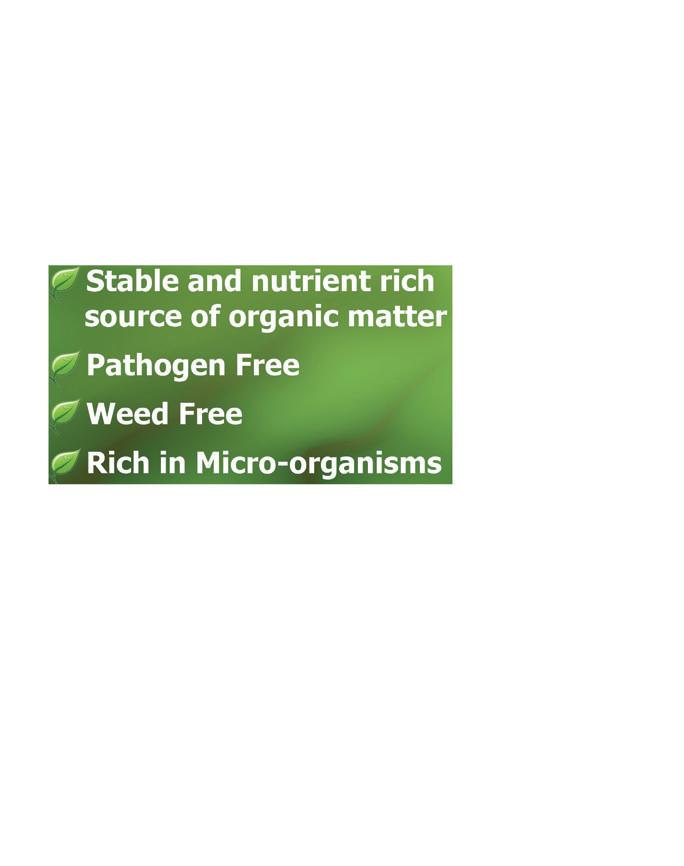
ContinuedonPage32
O ce: 559-686-3833 Fax: 5 59-686-1453 2904 E. Oakdale Ave. | Tulare, CA 93274 newerafarmservice .com Helping Farmers Grow NATURALLY Since 1974 March 2024 www.wcngg.com 31
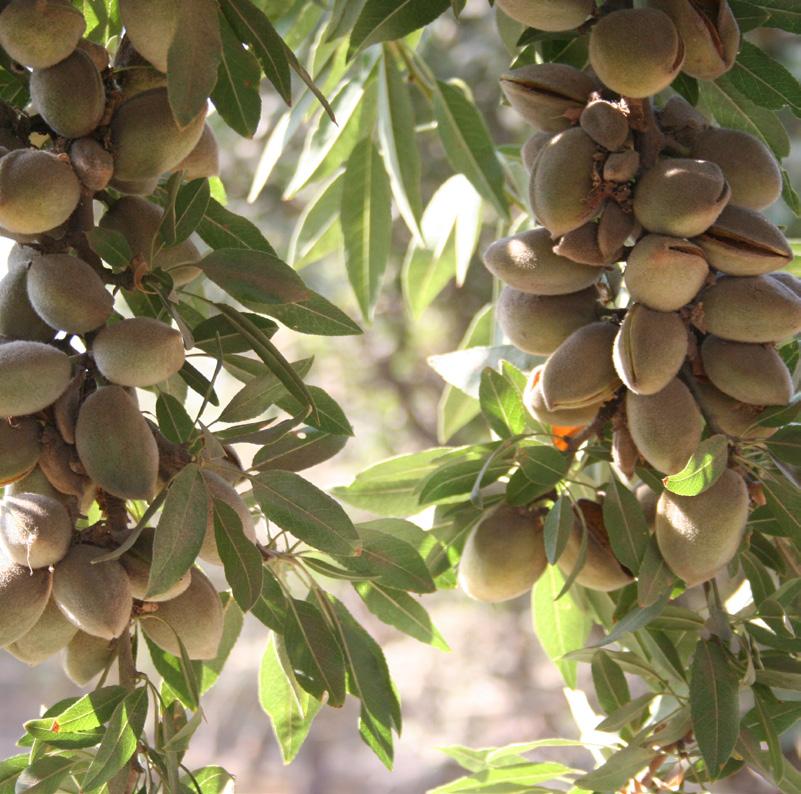
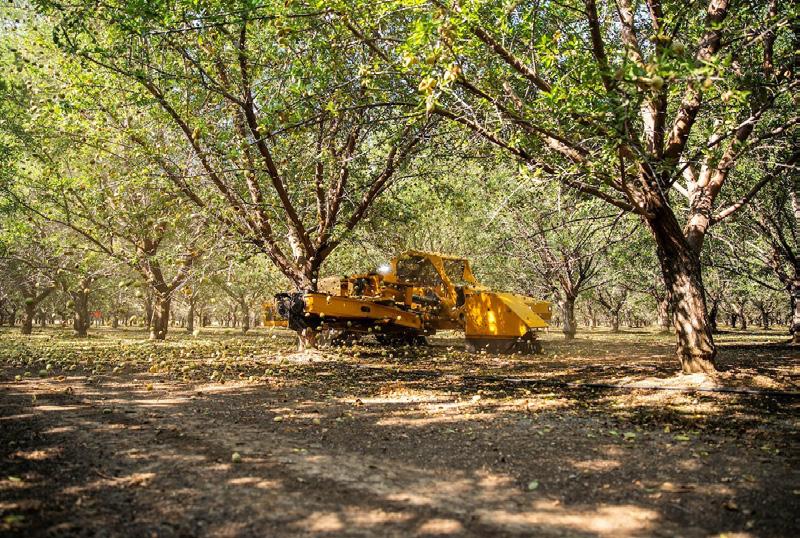
are for the environment. An orchard is basically an agricultural forest. We sequester 30 million metric tons of carbon a year. That’s a story we need to tell versus the negative, false information that can be tossed about by others.
Q. Is building markets something the Almond Alliance does hand in hand with The Almond Board?
Yes, it’s a team effort. The Almond Board, being a marketing order, does the marketing and outreach on developing and protecting markets and consumption. The Almond Alliance has the ability to work with our representatives in government. We can keep tabs on regulations or even trade issues. We can work to enhance insurance options for farmers. The list goes on and on. We want to keep our family farmers farming.
Q. Talk about the trade barriers to overcome in the almond export market.
Our largest trade barrier would be the China tariffs. We are at a 25% disadvantage when selling into China. This gives Australia an advantage in that market and effectively lowers the overall price we can receive. India also has a tariff on almonds, and we would love to see that go away. Walnut tariffs were recently lowered, but the almond tariff remains. India does not have its own almond production so it would seem reasonable to get something done here.
Q. What solutions are needed to help California’s almond growers?
existing and emerging markets grow consumption than lose acreage. Al-
monds are an amazing food source that are very shelf-stable and packed with nutrition. We have a great story around sustainability and how good almonds
What we need to do is move product. We’ve been hitting shipment records month by month, and that’s exactly what we need. We need to finish out this marketing year with 500 million to 600 million pounds of carryout, and then the industry can start healthy next year. As long as we don’t have some mega bloom that’s going to produce a giant crop, then we should be getting back to prices where growers can survive. And then from there, between SGMA [Sustainable Groundwater Management Act] and the tree removals from how tough it’s been for the industry, I think the crop will end up
ContinuedfromPage31
Eager to build the Alliance’s voice through a larger almond PAC, Vann seeks support from across the industry (photo by C. Merlo).
32 West Coast Nut March 2024
California’s almond industry sequesters 30 million metric tons of carbon a year. “That’s a story we need to tell,” says Vann (photo courtesy Vann Brothers.)
balancing out, probably to around 2.6 billion pounds. It will swing up and down year to year, but once it settles at that level, it should be economical for growers. That will be great. We just need to survive the tough times and get those volumes out.
Q. At Vann Brothers, what will you do differently this year?
We will continue to focus on doing the best we can in every area. When my father and my uncle Bill started this company in 1972, they had no land. They leased 30 acres and grew dryland wheat. They built from that and just continued to grow and work hard. They always looked at every process to see if there was a different way to do it. There was never, “We do it this way because that’s the way we’ve always done it.” We don’t say that in this company. We analyze everything and ask the questions. We’ve grown a lot in the last six years. We’ve added facilities and employees. We’ve built ourselves to handle up to 100 million pounds or more. At this point, it’s just fine-tuning all of our processes and looking to see if there is anywhere we can be more efficient or effective. That is some of the most enjoyable work, finding ways to be better than yourself last year, every year.
Q. What would you like almond growers. processors and others in the industry to know?
Compared to other industries, dollar for dollar, almonds don’t have as large a political action committee. Successful industries need good advocacy to protect and sustain a healthy environment for them to operate in. One of my goals is to build our voice through a larger almond PAC here at the Almond Alliance. If we had a dollar for every acre of almonds in this state, we’d have quite a cache to help influence a lot of the issues coming down the pipeline. That would be extremely useful. The almond industry buys a lot of equipment and supplies to do business. We need our partners to join us in this mission as well.
Comments about this article? We want to hear from you. Feel free to email us at article@jcsmarketinginc.com

 One of the strengths of the Almond Alliance is its ability to help remove red tape and streamline export shipping (photo courtesy Port of Oakland.)
One of the strengths of the Almond Alliance is its ability to help remove red tape and streamline export shipping (photo courtesy Port of Oakland.)
March 2024 www.wcngg.com 33
DISCOVER WHY OUR READERS LOVE US
How e ective is your advertising?
To help you learn the answer to this important question, West Coast Nut [December 2024], Progressive Crop Consultant [September/October 2024] and Grape & Wine Magazine [October/November 2024] invest in adViewPRO studies from the Baxter Research Center. Unlike other magazines, we don’t require a minimum number of insertions for our ad studies. Instead, every advertiser in the studied issues this year will receive that full report at no additional charge.
Plus, our exclusive agreement with Baxter Research Center means that you can’t get this rich data from any competing magazine. Ask us for a sample report, and you’ll see what we mean. Advertising is expensive, and it can be di cult—or impossible—to know whether or not the money you’re spending is accomplishing your marketing mission. adViewPRO studies take the uncertainty out of your marketing investment by providing clear answers to critical questions.
DECEMBER

As a grower, it helps to have the data presented to add to my personal data. This helpsincrease data points to validate or to call for more study on practices I use in myorchards. As a former (recently retired) PCA it allowed me those same opportunities,but during discussions with my growers many of the articles you presented, I wouldreference and ask my growers to read. This put the growers and myself on the samepage as far as actions taking on their farming operations.

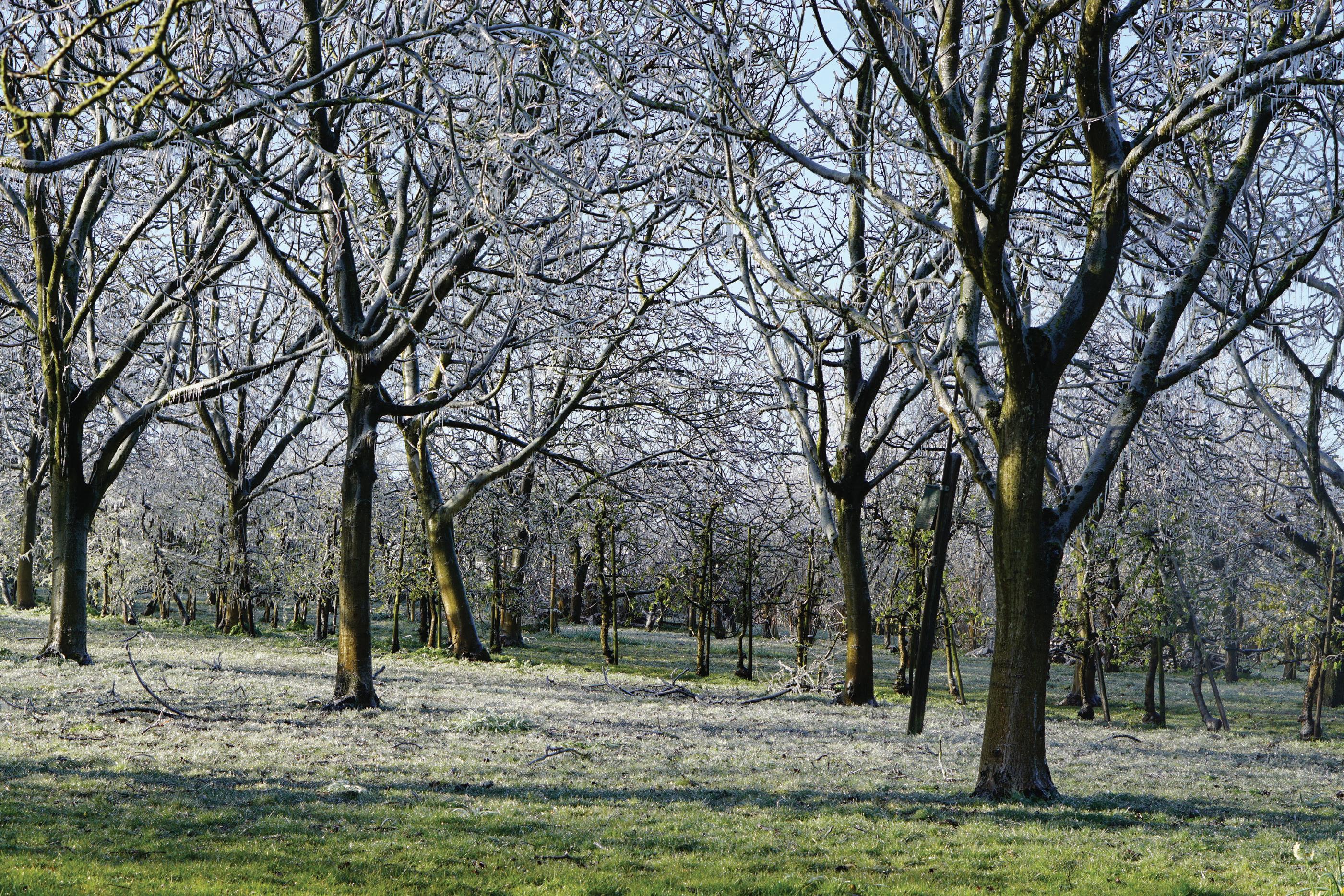
As the purchasing manager of an orchard and vineyard equipment manufacturer, it'shelpful read about how our customers are doing in the ever changing environment ofweather, tari s, and shipping. It's been a topsy turvy few years for growers.
It has the best grower information around.
PUBLICATION
2024 “ “ “ “ “ “
SEPTEMBER/ OCTOBER 2024
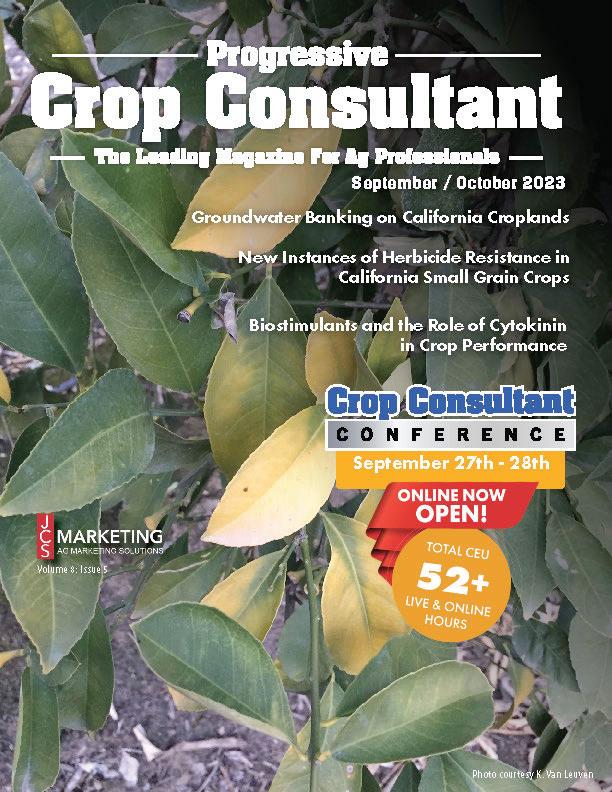
“

“ “
I read Progressive Crop Consultant due to its informative, agronomic articles. I especially look for those articles tied to anything related to plant/soil nutrition and irrigation water management. Because I am an advertiser. It makes me aware of California-centric issues important to PCA's
“
I read it to keep me informed about changes to the industry, new products and equipment as well as staying up to date with new science and research.
“ “
“ “ “
My work is closely related to the vineyard industry, topics and articles in this magazine have been very timely and spot on. I need to keep my nger on the pulse of the industryand this magazine greatly assists in doing that. Always nice to be informed of new products and techniques being used in the industry. I'm excited to receive and read thepublications that run my advertisements.
“
I am new to the grape industry and I value how Grape and Wine presents a broad arrayof the needs and challenges wine growers face.
As a Viticulture Consultant and former Viticulture College Instructor, I'm alwaysreading articles and magazines, as well to attending seminars and trade shows relatedto Viticulture. Always looking for new information, new developments.
“ “
OCTOBER/ NOVEMBER 2024


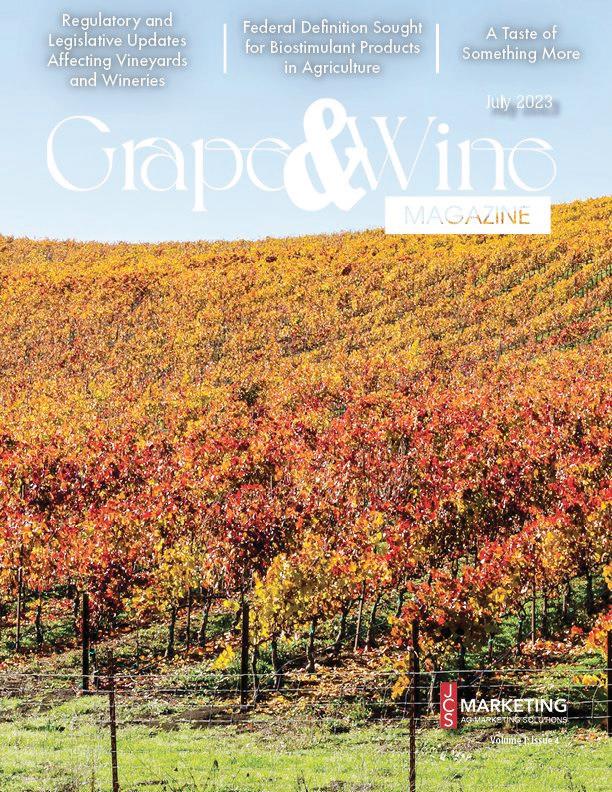
WILL THE LAST PERSON TO LEAVE CALIFORNIA PLEASE TURN THE LIGHTS OFF?
By ROGER A. ISOM | President/CEO, Western Agricultural Processors Association

Will the last person to leave California please turn the lights off? This is the title of the keynote address I recently gave at the Ag Personnel Management Association (APMA) 2024 Annual Forum. While being somewhat facetious, the thought is a serious one and hits close to home for me. For those conducting business in California, every single day is a constant reminder of how overbearing this state’s regulatory environment is, and how uncompetitive it makes us compared to the rest of the country and the entire world for that matter.
A few years back, a good friend and board member of the Western Agricultural Processors Association, Lincoln Forry, sold his farm and brand-new walnut huller, and he and his family moved to Paris, Texas where he had purchased 3,000 acres of pecans, cotton and grazing land. He had just built a brand-new walnut huller and office in 2015, but in 2016 the state legislature voted in the five-year increase in minimum wage and revised the state’s overtime provisions for agricultural workers. He sat down and did the math, and assuming the commodity prices stayed the same (which they didn’t), he figured they’d be in the red by 2022. Lincoln was a fifth-generation farmer from Colusa and his boys would be the sixth. He decided there was no way he was passing on this burden to the next generation, so they moved.
While I don’t blame him in any way, it is sad. We deserve every right to farm here. We take care of the land, and we take care of our people. And we do
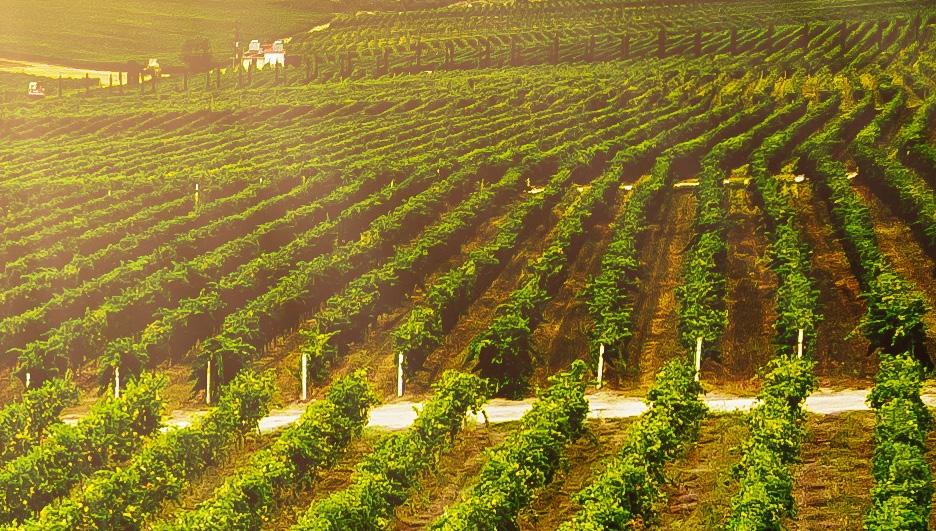
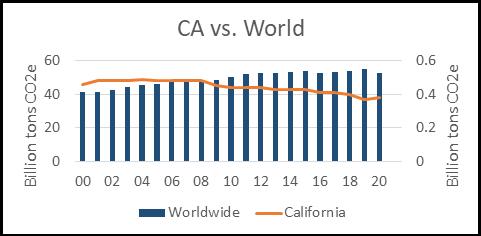
While California’s greenhouse gas emission have trended lower in recent decades, worldwide greenhouse gas emissions continue to increase.
so under the most stringent rules and regulations in the world. Even so, our state government continues to search for new ways to tighten the noose and cut off the very hand that feeds this state. Literally!
No other states have worker safety regulations like California does, such as the outdoor heat illness, nighttime lighting or the soon-to-be-adopted workplace violence and indoor heat illness regulations. No states have air quality mandates for electric trucks or electric forklifts, and only Washington has a higher minimum wage than California. California has the second highest minimum wage and the most stringent overtime provisions for agricultural workers. California has the toughest pesticide laws and is the only state that requires reporting of every pesticide application.
But why? In a word…hysteria.
In a recent California Department
of Pesticide Regulation hearing on Advance Pesticide Notification, several activists and alleged farmworkers testified. Commenters claimed they should be notified in advance of any pesticide application because pesticides cause asthma and valley fever. Another claimed it caused her clothes to fade within four to five days of purchase. Finally, one farmworker who lived in the Cantua Creek area of western Fresno County claimed all the fallowed land in Fresno County was not being farmed because the farmland was so contaminated with pesticides that it could no longer be farmed. Say what? Yes, and the Department of Pesticide Regulation said nothing, and only weeks later reiterated their push for this new regulation because of the outcry of the public. Even though there is not a single shred of evidence of any of these claims, the state is moving forward.
How about climate change? One
36 West Coast Nut March 2024
‘We deserve every right to farm here... And we do so under the most stringent rules and regulations in the world.’
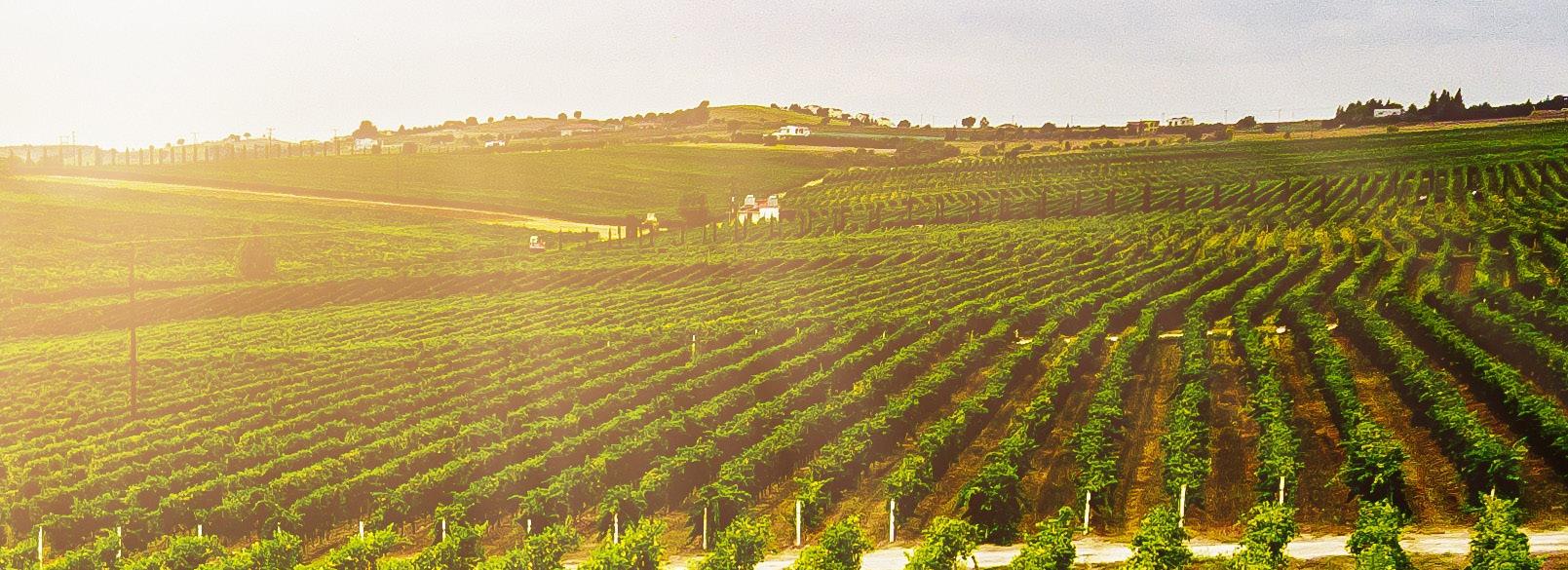
organization believes climate change is manmade, so they have a campaign against overpopulation. The Center for Biological Diversity is working against overpopulation by carrying out a campaign to protect endangered species from climate change by promoting the use of condoms. “Wrap with care, save the Polar Bear” and “Hump smarter, save the Snail Darter” are just a couple of their slogans to work against climate change. Regardless of your stance you have on climate change, the issue is the speed at which this state is trying to solve the crisis, and the fact that no one else is. The state has already adopted a rule mandating all electric trucks and working on a regulation to be adopted this summer mandating all electric forklifts. In 2026, you will no longer be allowed to purchase gas appliances. Don’t worry about the fact that California has the highest rates in the continental U.S., or that PG&E and SCE have a General Rates Case before the California Public Utilities Commission to raise them another 45%, or that PG&E needs to underground 10,000 miles of power lines at $3 million per mile. That isn’t slowing California regulators down; they are still moving at full speed ahead. There’s only one problem: Despite these far reaching, draconian, bankrupting, slap-your-grandma regulations, worldwide greenhouse gas emissions continue to increase. Hysteria!
If all that isn’t enough, how about the fact that we are the only state to have outdoor heat illness, mandatory COVID-19 and nighttime lighting safety regulations. Adding to that this year will be new regulations on indoor heat illness and workplace violence. Based on nothing. Hysteria!
for action. Whether you belong to WAPA, Farm Bureau, Western Growers or whoever, it does not matter. When they reach out to write a letter, contact a legislator or show up at a hearing, the time is now. This is our livelihood folks, and hysteria is no longer chipping away. It’s a Category 5 hurricane headed right for us.
Comments about this article? We want to hear from you. Feel free to email us at article@jcsmarketinginc.com


When pressed, California administrative officials say, “We want to lead the way.” They also claim that “if we do it first, others will follow”. We’re still waiting.
So, what do we do? Fold? Move? No way. Ladies and gentlemen, the time has come. Agriculture must be heard. In most of the hearings for these regulations, agriculture is outnumbered. Sometimes as much as 10 to 1. We can no longer afford to let that happen. The hysteria must be countered. As I drive through western Fresno County, I still remember these empty fields being some of the most productive farmland in the world. Now filled with solar panels or tumbleweeds, we can no longer sit idly by. This is a farm-wide call

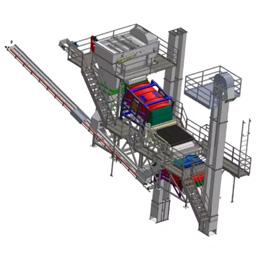


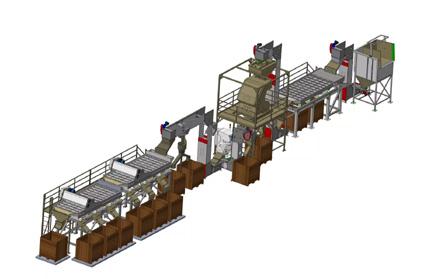



incre by im mach comp work Manufacturing Nut Processing Machinery and Systems for over 60 L i c e n s e N o 2 5 1 6 9 8 1.209.599.2148 w w w r i p o n m f g c o c o m HAVE A QUESTION? NEED A QUOTE?
March 2024 www.wcngg.com 37
A Yearlong Management Plan for Navel Orangeworm from Field to Export
By KRISTIN PLATTS | Digital Content Writer

As the almond industry continues to learn from a season of destruction by navel orangeworm (NOW), UC researchers and industry experts agree planning for NOW throughout the year should be looked at as an investment, not an expense. A session on preparing for NOW year-round at The Almond Conference (TAC) in December painted a clearer picture of what happened in 2023, what IPM programs should look like to prevent a repeat and how to deal with affected product as it moves through the export process.
A year ago, growers, who were grappling with a low-price forecast, were looking for ways to cut spending, according to Kern County UCCE Farm Advisor David Haviland, who said many growers chose to cut back on sanitation, some couldn’t sanitize due to rain and others saw mating disruption as too costly. He added spray timings and programs were also out of whack, and obtaining a timely harvest was virtually impossible.
Addressing what happened with NOW, Haviland said growers need to consider what’s referred to as the four pillars of an NOW IPM program going forward: winter sanitation, mating disruption, insecticides and a timely harvest.
Breaking Down the Four Pillars
Haviland describes four important
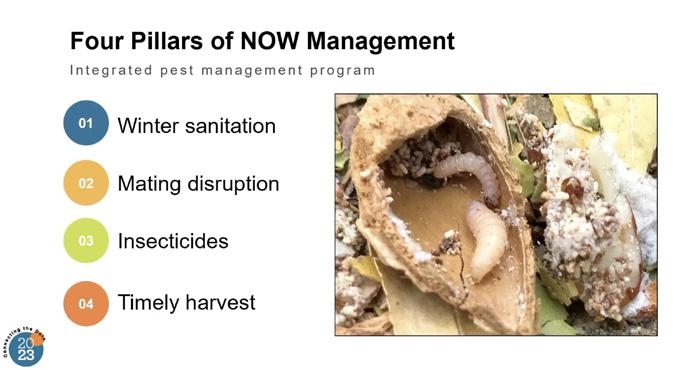
steps to sanitation: shaking, poling, blowing and mowing. With mummy removal playing an intricate role in NOW control, mummy reduction will reduce worms, make it more difficult for them to find mates, take away places for them to lay their eggs and physically exhaust the moths that do manage to get that far.
“The farther you go in reducing the number of mummies, the more impactful sanitation is,” he said. “That’s why we drive mummies and sanitation down to two per tree, so we’re impacting all of these reasons that NOW gets lower.”
With mating disruption, Haviland said it’s a predictable, effective and affordable method to controlling NOW.
With the breakeven point at 1%, it’s the cost factor of mating disruption that should get growers thinking harder about using it.
“If you did not use mating disruption this year and you had more than 1% damage, you would have more money in your pocket right now if you had invested in mating disruption than by not investing,” he said. “When you look at it as an investment and what you’re getting back from it, that’s where it makes sense to use it.”
Haviland pointed out the typical USDA damage cost of 4% from NOW for weight not paid is just the tip of the iceberg and doesn’t take into account another 4% left in the field and 12 cents on $1.60 loss in bonuses, for a 16%
38 West Coast Nut March 2024
Kern County UCCE Farm Advisor David Haviland said growers need to consider what’s referred to as the four pillars of a NOW IPM program: winter sanitation, mating disruption, insecticides and a timely harvest.

Speaking at The Almond Conference in December, Mel Machado, director of grower relations at Blue Diamond, said some key measures to deal with NOW will need to include reducing the inoculum in order to reduce the number of moths. He said this can be done with sanitation, eliminating “abandoned” orchards and mating disruption.

economic loss overall.
“That’s why the economics of investing in navel orangeworm are so huge because these losses are much bigger than what shows up just on that USDA sheet,” he said.
As for insecticide use in 2023, growers were faced with a non-synchronized split that came in mid-July and didn’t coincide with the start of the second flight, and hull spilt sprays, if made at all, were turned upside down.
“That was a real struggle by growers, trying to navigate the best timing with everything out of whack,” Haviland said.
Discussing timely harvest as the fourth pillar, he said his definition of a timely harvest is harvesting Nonpareils before the third flight starts because most of the worms during the month of July are in the Nonpareils.
“If you’re able to shake your Nonpareils and get them piled and fumigated before any of those worms become
adults, there’s no influence of the third flight on the Nonpareils, and you’re essentially removing the third flight from the field before it becomes the third flight,” he said.
Driving home the importance of a timely harvest, he added if 99% of Nonpareils get fumigated in time, there will be 99% control of the worms. Those that don’t get fumigated in time will emerge to become the third flight, leading to pinhole damage and eggs laid in pollinizers, which can then lead to an even greater fourth flight.
“Hopefully thinking about how to integrate those four pillars is going to get us back on track to where we were in the long term,” Haviland said.
Neighbors Matter
Referring to the “neighborhood” effect, Mel Machado, director of grower relations at Blue Diamond, said an unprecedented number of abandoned and unharvested orchards last year significantly affected the NOW population.
“How do you abate this? Because
these things pumped out the moths,” he said. “You add that to the neighbor who cut some corners when you did it all, and you got mugged. How do you fight against this?”
Machado says some key measures to deal with the issue have to include reducing the inoculum in order to reduce the number of moths. This can be done with sanitation, eliminating “abandoned” orchards and mating disruption, he said.
Blue Diamond has created a tool to try and address that last element with the Neighborhood Mating Disruption program agneighbors.com, an online tracker that allows growers to say they’re participating in mating disruption or that they are interested in participating.
“You’ll be notified when we put together enough continuous acres that will be viable for disruption that you and your neighbors are interested in

ContinuedonPage40
March 2024 www.wcngg.com 39
Tim Birmingham, director of quality assurance and industry services at Almond Board of California, explains details of the PreExport Check Program for aflatoxin.
playing with each other; go forth and disrupt.”
He said NRCS funds are available to help growers with additional costs associated with mating disruption and their goal is to make this spread even to smaller blocks.
Aflatoxin Postharvest
Another issue that comes with orchards invaded by NOW is the risk of aflatoxin creating molds, which winter sanitation can go a long way to help control. Tim Birmingham, director of quality assurance and industry services at Almond Board of California, said NOW moths can carry these molds to nuts, which larvae then feed on, creating a microclimate that allows the mold to grow and produce the aflatoxin.
Aflatoxin in various crops is widely regulated around the world, with different limits in different markets, Birmingham explained. The U.S. regulates at 20 PPB, while the E.U. and Japan, two of California’s major markets, have
much stricter limits. One of the biggest challenges with aflatoxin, he noted, is once it gets into the product, it’s not homogeneous, so it’s not uniformly mixed in the lot.
“You can have literally hot pockets, that needle in the haystack, that makes detection really difficult,” Birmingham said.
Demonstrating the correlation between insect damage and aflatoxin, Birmingham noted a study that looked at 50 different lots that showed insect damage constituted 7.2% of the weight from all 50 lots and amounted to 76.3% of the aflatoxin mass.
“This is telling us the majority of the aflatoxin we find is indeed going to be found in those insect-damaged nuts,” he said.
While the majority of aflatoxin shows up in insect-damaged nuts, smaller amounts can also show up as a result of other defects, like mold or chip-and-scratch mechanical damage.
“Once you disrupt the surface of the nut, you can create different little microclimates, which can allow the
mold to grow or potentially the cross contamination with the aflatoxin,” he said.
Birmingham said handlers can mitigate the issue during sorting, citing a study that used a laser sorter followed by hand sorting to remove seriously damaged product.
“We know this is very effective,” he said. “We see lots that are failed for aflatoxin at higher levels, you can run them through this sort or sorting (we call it reconditioning), pull out the damage, and that will indeed lower the level of aflatoxin in the finished product stream.”
Since aflatoxin is typically non-homogenous, the size of a sample and how it is drawn will impact variability, and big samples are critical when testing. Birmingham said handlers have the chance to participate in the Pre-Export Check (PEC) program, which takes place on consignments shipped to the EU, which will test lots at a reduced frequency that have already been tested in the U.S.
“The handlers spend a lot of time, ef-

ContinuedfromPage39
40 West Coast Nut March 2024
Blue Diamond has created the Neighborhood Mating Disruption program (agneighbors.com), an online tracker that allows growers to say they’re participating in mating disruption or that they are interested in participating.
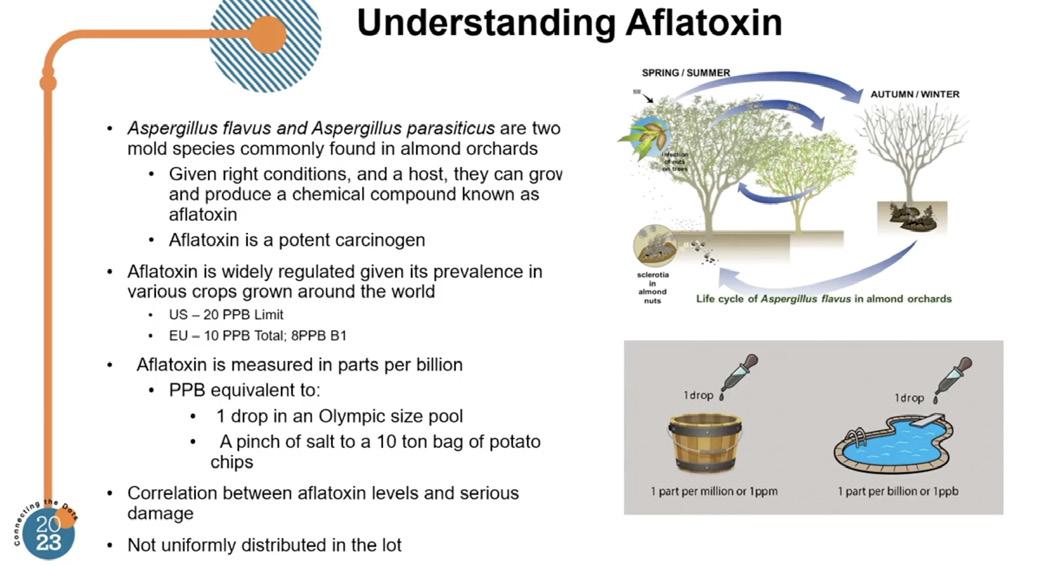
fort and money sampling that product, and they pull a very large sample to try to make sure they find that hot pocket, so that they can hold that lot back here before they actually ship it,” he said.
He noted while PEC specifies the EU will test at a reduced frequency, they do still test, and failed lots will still occur. In some cases, Birmingham said, higher-than-acceptable lots will still be sent to a foreign country. This is especially true in Japan since they test every consignment that comes in.
“This is a little bit of a challenge for the industry,” he said. “We are working with Japan to see if they will back off of that 100% testing requirement, but it’s a slow-moving process.”
Handers that do find failed lots needing to be returned to the U.S. should focus on getting them back as soon as possible, prepare and submit a reconditioning plan if required by the FDA and then reconditioning, Birmingham added.
Comments about this article? We want to hear from you. Feel free to email us at article@jcsmarketinginc.com

MIST NOW Navel Orangeworm Mating Disruption Getting the job done year after year!
March 2024 www.wcngg.com 41
EVOLVING INSECT PEST PRESSURES IN PISTACHIO DRIVEN BY WARMER TEMPERATURES
By CECILIA PARSONS | Associate Editor

Invasion of pest species that impact crop production, crop quality and even tree growth are trials that every pistachio grower faces. While endeavoring to harvest a marketable crop every year, growers are finding fewer chemical tools available to them for pest control. Compounding the problem is a changing climate that appears to favor increased pest reproduction.
Indication of this increase was noted by UC orchard systems advisor
Katherine Jarvis-Shean in her presentation at the 2024 UC Statewide Pistachio Day. The pest that poses the biggest potential threat to pistachio crop quality, navel orangeworm (NOW), is expected to be able to produce more generations every year. Warmer temperatures earlier in the spring mean earlier NOW flights resulting in more generations by the fall. Increased NOW numbers when nuts are vulnerable, mean a loss of marketable nuts and a hit to grower checks.
Besides NOW, leaffooted bugs, stink bugs, Gills mealybug, the invasive Carpophulis beetle and even nematodes all pose threats to profitable pistachio production.
Houston Wilson, UC Riverside entomology specialist based at the Kearney Ag Center, said progress has been made in identifying a pheromone lure for leaffooted bugs. With an effective lure and trap, he said growers and managers will be able to see trends in orchard populations and determine if control measures are warranted.
In pistachio production, LFB feeding early in the season can cause epicarp lesion, nut drop, and create conditions conducive to pathogens. Later feeding, after shell hardening can cause kernel necrosis. This pest is also known to transmit stigmatoycosis, Botryosphaeria and shoot blight. Without an established economic threshold, growers and crop managers have relied on direct sampling (i.e. visual assessments and beat sampling) to find adults or feeding lesions. The development of a lure and trap give them a more accurate prediction of crop damage from this pest, plus save a lot of time on sampling efforts.
Identification and synthesis of all 9 components of the LFB pheromone has been achieved and trap design has been improved to enhance monitoring ability. Wilson said this year’s plan is to continue evaluating and refining lures, as well as work with pheromone companies to determine if an affordable lure can be produced at scale.
Mealybug Intercepts Carbohydrates
Gill’s mealybug continues to infest pistachio orchards. UCCE entomology and pest management farm advisor David Haviland said this pest intercept carbohydrates intended to for nut development, the feeding results in smaller size nuts and less shell split.
Crawlers are targeted for insecticide treatments because they are easier to kill.
“Back in the day there was one treatment and it was done,” Haviland said. More recently, pistachio growers and crop managers have found that the usual insecticide treatments are not as effective. Haviland ’s trial looked at effects of insecticide applications on mealybug
42 West Coast Nut March 2024
In pistachio production, leaffooted bug feeding early in the season causes nuts to drop. Later feeding after shell hardening can cause kernel necrosis.
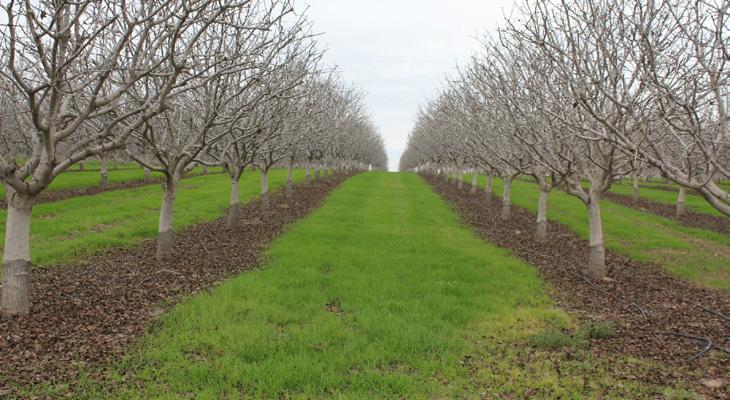
densities from late March to harvest. Haviland said the most significant result of the trial was that Movento was not effective in any of the six treatments where it was included. It previously was determined to be the most effective.
The industry standard products, Assail was effective as a solo treatment or in combination with other products applied in late May or late July. Haviland ’ s other significant finding was evidence that late March is viable application timing for Centaur. This is important, Haviland noted, because it is an effective product, but it cannot be used in late May due to residue tolerance levels for marketing in the EU.
Haviland noted that if mealybug signs are found in an orchard post harvest, not to waste money on an insecticide application then, but note the location and treat in the spring.
A graph showing efficacy of insecticides can be found in the 2023 Research of the California Pistachio Research Board.
Nematode Warning
For 40 years, pistachio growers have not worried about nematodes affecting tree growth, but things have changed according to UC Riverside nematologist Andreas Westphal.
In a presentation at the UC Statewide Pistachio Day, Westphal said the increase in pistachio acres planted after walnut orchards were removed, plus the difference in rootstock genetics compared to 40 years ago suggest caution. Walnuts are a notorious host for P. vulnus, commonly known as root
lesion nematode. Population densities of this soil pest take longer to develop in pistachios, with trunk diameter being an indicator of presence of high levels of root lesion nematode in the soil.
Westphal said field screening showed low population densities root knot nematode and root lesion nematode in pistachio compared to other nut crops hosts, but numbers have increased since
2017 including in 2018 planting of UCB1 genotypes at the end of 2022. After 5 years of planting and inoculation, root lesion nematode numbers in several of the UCB1 clones were similar to the susceptible nut crops on peach rootstock Nemaguard and the walnut rootstock VX211.
More information is needed to corroborate the damage potential of root lesion nematode, Westphal said, but caution – and soil samples are advised when planting pistachio after walnut. Mitigation should be considered, he added, depending on detected population densities in the orchard site.
Carpophilus Beetle on the Rise
The latest insect pest to threaten tree nut crops is the Carpophilus beetle (Carpophilus truncatus), the only species of Carpophilus known to attack tree nuts. It has gained a reputation in Australia for damaging almonds over the past 10 years. Australian knowledge and

ContinuedonPage44
March 2024 www.wcngg.com 43
The pest that poses the biggest potential threat to pistachio crop quality is navel orangeworm. Warmer temperatures earlier in the spring mean earlier NOW flights resulting in more generations by the fall (all photos by C. Parsons.)

ContinuedfromPage43
experience with this pest will be helpful to U.S. growers, Wilson said, and he is already in contact with his counterparts in Australia to learn more and build collaborations. This beetle was first found in California tree nut orchards in
September 2023, and subsequent reports of this pest have been confirmed from Kings, Madera, Merced and Stanislaus counties. Samples were sent to the CDFA lab and identity was confirmed.
Now, Wilson said, plans are to collaborate with Australia and conduct dual season trials. There are still a lot of unknowns about this pest, Wilson said. One key feature is that they overwintering in remnant mummy nuts, so like NOW, crop sanitation is critical for management of Carpophilus beetle.
Successful chemical or biological controls for Carpophilus beetles have yet to be identified. Chemical controls to date have produced highly variable results, primarily due to difficulties with coverage. Orchard sanitation is strongly suggested as this beetle overwinters in mummy nuts much like navel orangeworm. Wilson said this pest is well known by Australian almond growers, whose primary management tool is winter sanitation.
Carpophilus beetle adults will move to new crop nuts around hull-split. They
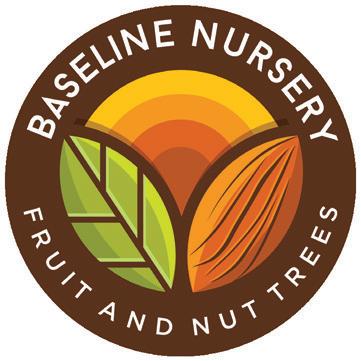
can chew thorugh the almond shell and then deposit eggs directly onto the kernel. The larvae will then tunnel into almond kernels, where their feeding leaves behind a fine white powdery substance, likely a mix of nutmeat and frass. Infestations have been documented in pistachio as well.
Wilson and his colleagues Jhalendra Rijal (UC IPM Advisor – North San Joaquin Valley), David Haviland (Entomology Far Advisor, Kern Co.) and Sudan Gyawaly (UC IPM Advisor –Sacramento Valley) hope to learn more about the ecology and management of this pest in their trials over the 2024 season. Meanwhile, Wilson strongly emphasized the importance of orchard sanitation to control this pest. Chemical control has not proven effective due to challenges with coverage and there is no known bio control at this time.

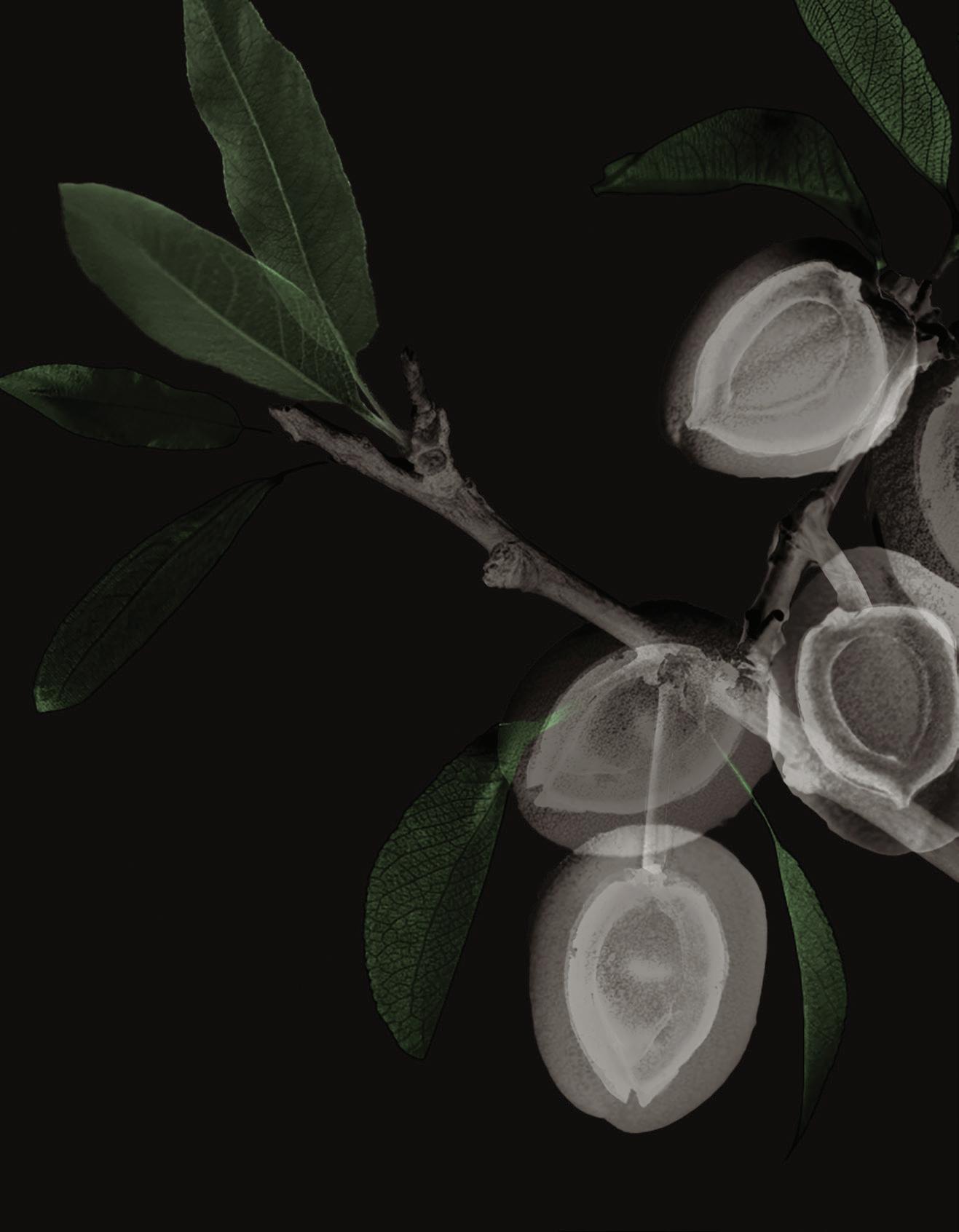
want
hear
free to
Comments about this article? We
to
from you. Feel
email us at article@jcsmarketinginc.com
From Lab to Field Partnering with the best to provide quality trees and service WALNUTS VX211 RX1 Vlach Grafted PISTACHIO UCB-1 ALMONDS Nonpareil Monterey Butte Padre CONTACT US TODAY 916-605-0463 sales@baselinenursery.com 3556 Sankey Rd. Pleasant Grove, CA 95668 44 West Coast Nut March 2024
Orchard sanitation for Carpophilus beetle in almond and pistachio is strongly suggested as this beetle overwinters in mummy nuts much like navel orangeworm.


APPLY LESS, EXPECT MORE? Sure-K® and Kalibrate® are registered trademarks of AgroLiquid. © 2024 AgroLiquid. All Rights Reserved. Get the advanced crop nutrition products and agronomic knowledge you need to support your crops, your soil and a sustainable future. AgroLiquid has precisely what it takes to help you achieve more with less. Find an AgroLiquid dealer near you AgroLiquid.com
Building a Safety Foundation with an Injury and Illness Prevention Program
By THERESA KIEHN | President/CEO, AgSafe
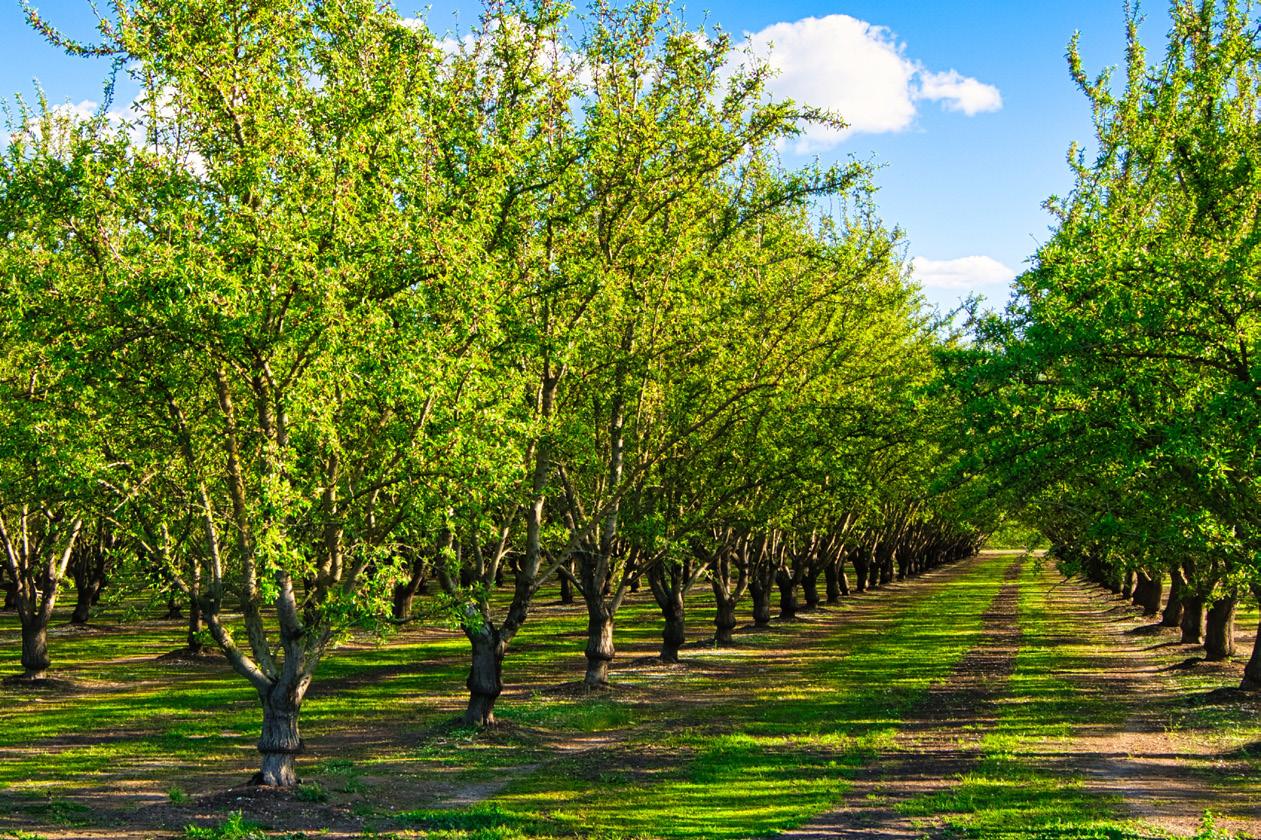
Since 1991, all California employers with 10 or more employees are required to have a written Injury and Illness Prevention Program (IIPP). Even though it has been over 30 years since the regulation went into effect, the IIPP is still one of the most cited violations by Cal/OSHA across all industries including agriculture. The citations under this code vary greatly from not having a plan at all to failing to review it with your employees on a regular basis. The beginning of the new year is a great opportunity to give your safety program time and attention before the season kicks off.
Basic Elements of an IIPP
An effective IIPP improves the safety and health in your workplace and reduces costs through good management and employee involvement. The eight required Injury and Illness Prevention Program elements are:
• Responsibility: This section identifies who in your operation has the authority and responsibility for
implementing the provisions of the IIPP.
• Compliance: This component outlines the system that ensures all workers comply with the rules for maintaining a safe work environment.
• Communication: This element captures the plan for facilitating a continuous flow of two-way communication between management, supervisors and employees.
• Hazard Assessment: Periodic inspections of the workplace are essential to evaluating and reevaluating safety concerns; this section outlines the formalized plan for timely assessments.
• Accident/Exposure Investigation: This section identifies the actions to be taken in the case of an actual incident or near-miss to help identify the root cause and then take corrective action.
• Hazard Correction: This component identifies the process for correcting unsafe or unhealthy workplace

Cal/OSHA will cite an operation based on what was included in their IIPP and review your training records (photo courtesy AgSafe.)
conditions, practices or procedures.
• Training and Instruction: As with any plan, there needs to be training to aid in implementation. This element provides details as to who, when and what needs to be trained.
• Recordkeeping: This section outlines documentation requirements.
To be effective, your IIPP must address the following areas:
• Fully involve all employees, supervisors and management.
• Identify the specific workplace
46 West Coast Nut March 2024
hazards to which employees may be exposed.
• Correct identified hazards in an appropriate and timely manner.
• Provide effective training.
For useful tools in creating or updating your IIPP, take advantage of Cal/OSHA’s IIPP e-tool at www.dir.ca.gov/dosh/ etools/09-031/how.htm
Heat Illness Prevention Plan
The employer must develop, put in writing and implement effective procedures for complying with the requirements of T8 CCR 3395, the Heat Illness Prevention Plan (HIPP). Each company needs to have a written heat illness prevention plan at the worksite that contains the following elements and includes specific details as to how you will ensure that the provisions are met:
• The designated person(s) that have the authority and responsibility for implementing the plan in the field.
• Procedures for providing sufficient water.
• Procedures for providing access to shade.
• High-heat procedures.
• Emergency response procedures (don’t forget your lone workers, e.g., irrigators).
• Acclimatization methods and procedures.
When drafting your plan, it is important to consider the size of your crew, the length of the work day, the ambient temperatures and any additional personal protective equipment (PPE) that contributes as an additional source of heat. The plan needs to be in English and also the language understood by the majority of the employees. Like the IIPP, Cal/ OSHA has an HIPP e-tool to assist with drafting your program: www.dir.ca.gov/dosh/etools/08-006/index.htm.
COVID-19 Prevention Plan
Employers are also required to have a COVID-19 Prevention Plan included in their IIPP or as a standalone safety program until Feb. 3, 2025. The elements of your plan should include the following:
• Determine measures to prevent COVID-19 transmission and identify and correct COVID-19 hazards.
• Provide COVID-19 training to employees.
• Investigate and respond to COVID-19 cases in the workplace.
• Exclude from the workplace COVID-19 cases until they meet return to work criteria and implement effective policies to prevent transmission after close contact.
• Make testing available at no cost to employees.
During an outbreak make COVID-19 testing available to all employees within the exposed group.
• Notify employees who had close contact in the workplace.
• Require and provide face coverings and respirators in the manner and in the circumstances specified in the COVID-19 Prevention regulations.
• Advise employees they can wear face coverings at work regardless of their vaccination status, and that retaliation
by the employer is illegal.
• Improve indoor ventilation and air filtration to prevent COVID-19 transmission.
• Require respiratory protection during aerosolizing procedures.
• Keep records of COVID-19 cases at the workplace.
• Maintain records of COVID-19 cases, and report serious illnesses and outbreaks to Cal/OSHA and to the local health department when required.
Cal/OSHA has posted Model COVID-19 Prevention policies and procedures on its website for employers to use.
Coming Soon: Workplace Violence Prevention Program
By July 1, 2024, employers must develop a written program addressing workplace violence prevention. Just as the case with the other required programs, Cal/OSHA will be providing a model program which employers can utilize. It is anticipated this model program will be available this spring in advance of the July 2024 program implementation requirement.
Reminders
It is important to develop an IIPP that fits the unique needs of your operation. When including specifics in your plan, ensure you can meet those benchmarks and appropriate documentation is occurring. Cal/OSHA will cite an operation based on what was included in their IIPP and review your training records. Additionally, make sure to review programs with your team annually and make it available upon request. If you should need assistance with creating or implementing any of your safety programs, please connect with our team via email at safeinfo@agsafe.org or call (209) 526-4400.
AgSafe is a 501c3 nonprofit providing training, education, outreach and tools in the areas of worker safety, human resources, labor relations and pesticide safety issues for the agricultural community. Since 1991, AgSafe has educated over 100,000 employers, supervisors and workers on these critical issues.
Comments about this article? We want to hear from you. Feel free to email us at article@jcsmarketinginc.com

March 2024 www.wcngg.com 47
Status of Brown Spot Damage Caused by Hemipteran Pests in Almond Monitoring and Management Strategies For 2024
By JHALENDRA RIJAL
| UCCE Area IPM Advisor, San Joaquin, Merced and Stanislaus County, MAHESH GHIMIRE | UCCE Assistant Research Specialist, Stanislaus County, SUDAN GYAWALY | UCCE IPM Advisor, Butte County and RAMAN BANSAL | Research Entomologist, USDA-ARS
This past year, 2023, has been a record year with the greatest crop damage by navel orangeworm (NOW) in almond statewide. While discussions have predominantly centered around NOW management strategies for the upcoming 2024 season, it’s imperative not to overlook the escalating brown spot problem as this issue has not gone away. Brown spot is the general term for hemipteran “true bug” damage in almonds. Hemipteran pests have piercing-sucking mouthparts, and their feeding results in either gummy kernel or necrotic kernel, also known as brown spot, and sometimes the combination of both damage types (Figure 1). Gummy kernel can also be caused by some other physiological reasons, however.
Between 2021-23, we collected harvest samples from 14 to 24 variety/orchard combinations from San Joaquin Valley and found that the average brown spot (excluding gummy kernels) percentage in Nonpareil was higher in 2023 (1.8%) than in 2022 (1.5%), while pollinizer variety damage was slightly lower than Nonpareil in 2023 than previous years in our

 Figure 1. Different types of damage, including brown spot, caused by large hemipterans feeding in almonds (photo courtesy J. Rijal.)
Figure 1. Different types of damage, including brown spot, caused by large hemipterans feeding in almonds (photo courtesy J. Rijal.)
48 West Coast Nut March 2024
Factors affecting damage caused by hemipteran pests.
study (Figure 2). We believe that many brown spots damage in 2023 was likely masked by high level of NOW damage as brown spot occurs earlier than the NOW damage. These hemipteran damage levels are still very substantial.
Hemipteran Pests and Their Seasonality
The major hemipteran pests in almond orchards include leaf-footed bug, native stink bugs (red-shouldered, Consperse and green stink bug) and a relatively recently introduced invasive brown marmorated stink bug (BMSB). These pests are present in almond orchards at different densities and at slightly different times in the season (early vs late). Consequently, the damage symptoms can look a little different for different hemipteran pests’ species. The ultimate economic damage as a result of the large hemipterans feeding in almonds depends on roughly four factors:
1) size of the insect/stylet length, bigger the size, higher the damage; 2) population abundance, presence


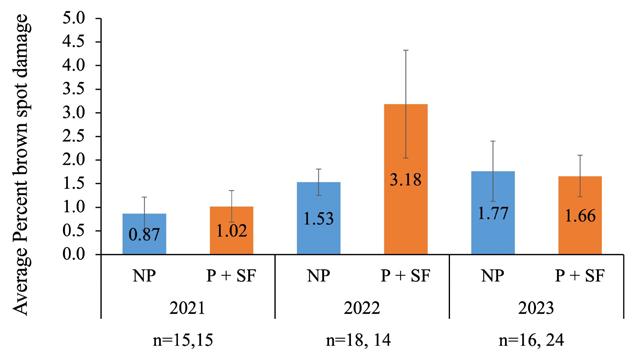
of additional hosts at or outside of the orchard makes it worse; 3) host susceptibility/timing, feeding by the same insects in different time of the year can produce different signs; and 4) feeding mechanism/enzymes involvement, different species of hemipterans have different blends of digestive or salivary enzymes for softening the fruit content

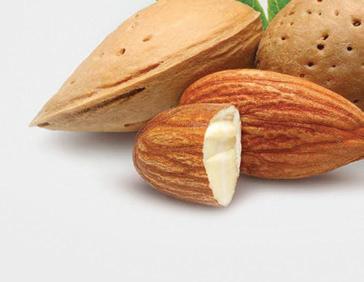

effectively. For example, infestation of developing nuts by both leaf-footed bug and invasive BMSB before the shell-hardening (March to April) mostly results in nut abortion and nut drop, while feeding during May can result in mostly gummy kernels, and the


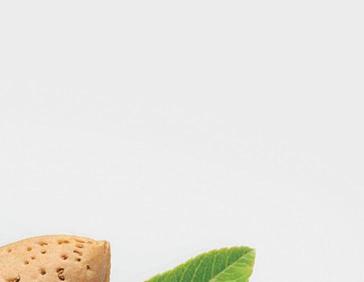


ContinuedonPage50
March 2024 www.wcngg.com 49
Figure 2. Average percent kernel damage at harvest from multiple variety/orchard combinations between 2021 and 2023. NP = Nonpareil, P = Pollinizer, SF = self-fertile.

ContinuedfromPage49
June/July infestation largely results in a typical brown spot with dark circular indentation. Toward the hull split, the hemipteran feeding generally results in lighter, less intense brown spots, which may not even count as rejects at the processing facility.
Invasive BMSB and Native Green Stink Bug on the Rise
We have been conducting seasonal monitoring and surveys of BMSB using multiple methods in San Joaquin Valley for several years. Our survey showed that BMSB has been well-established in several northern San Joaquin Valley orchards and has begun to be found in a few central San Joaquin Valley (Fresno County) in the last two seasons. Since all major hemipteran feeding can result in one of those visual brown spot symptoms and a targeted BMSB trap-


ping in orchards by growers and PCAs is not common, many BMSB damages have likely been unidentified. In northern San Joaquin Valley, BMSB, green stink bug and leaf-footed bug have been found as the major large hemipterans causing damage to almonds in the last three years (Figure 3).
There has been increased evidence of native stink bug activities in almond orchards, particularly green stink bugs lately. The green stink bug is not a common pest during the early part of the season, but its occurrence in July through September, especially for
Valley orchards close to riparian areas with box elder and other tree hosts nearby. Boxelder bugs in the spring can directly infest the almond fruits, causing small fruits to drop and older nuts to gum or develop brown spots in the kernel (Figure 4). A visual survey of the orchard weeds and trees bordering with alternate host trees helps to spot boxelder bugs. This pest can be a problem before the shell-hardening stage of almonds.
Monitoring Strategies
Hemipteran pest damage in or
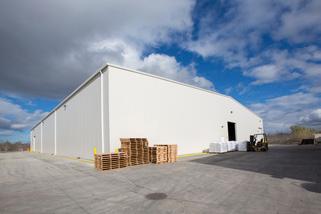



STEEL BUILDINGS
Whether it’s a design-build project, renovating and/or expanding an existing building, Hilbers Inc. and Butler have the expertise to see you through to the completion of your pre-engineered metal building project!
Proudly operating as 100% employee-owned. We build structures and Relationships to last.
HILBERSINC.COM 530.673.2947 770 N. WALTON AVE SUITE 100 YUBA CITY, CA 95993 Hilbers Inc. partnering with Butler is the team you can trust.
Figure 4. Nymphs and adult boxelder bug and its damage to almonds (photo courtesy S. Gyawaly.)
50 West Coast Nut March 2024
commercial orchards in the Central Valley. Although tedious, the best ways to monitor hemipterans in almond orchards are by visually sampling the canopy, particularly on the sunny side of the trees in orchard edges, and performing beating tray sampling. Visual observation of gummy fruits is an indicator of feeding damage and can be taken as confirmation of the damage.
Managing Hemipterans in Almond Orchards
There are no economic thresholds for any hemipteran pests in almonds. BMSB and leaf-footed bug can cause nut damage from the beginning of the season when they migrate from overwintering places to the orchard, and their presence from March to May can result in substantial damage and economic loss. So, upon detection, orchards may warrant insecticide sprays. In commercial orchards, pyrethroid-based insecticides have the greatest efficacy against hemipterans, but due to the potential impact of these insecticides on mite predators, their use is not recommended unless it is necessary. A few other alternative insecticides based on our recent trial are presented in Figure 5. In this study, three trees were sprayed with the same insecticide and replicated four times. The orchard was the 4th leaf of the Independence variety and had a history of stink bug activities and damage.
Despite growers’ attention on NOW, there was substantial hemipteran damage to almonds in the 2023 season, and the activities of hemipteran pests, mostly stink bugs and leaf-footed bugs, were steady. These large hemipterans feed on developing almond fruits, which produce brown spots and gummy kernels. With the increased brown spot damage in orchards, scouting orchards in the spring using available monitoring tools, such as clear panel sticky trapping, visual surveys and beat tray samplings, is critical to detecting the hemipteran pests’ activity on time and making treatment decisions as early as possible.
The authors would like to thank the Almond Board of California for providing funding to conduct hemipteran pest studies in almonds. Thanks to all
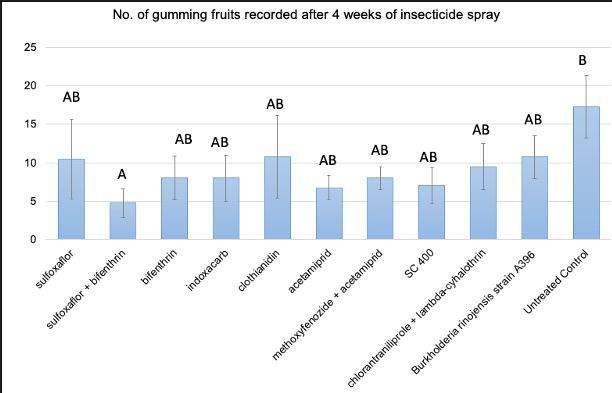
collaborators and grower cooperators.
Thanks to D. Rivers, K. Vue, D. Green and J. Peacock for their technical help.
Mention of trade names or commercial products in this publication is solely for the purpose of providing specific information and does not imply recommendation or endorsement by the U.S. Department of Agriculture (USDA) or any of the other author affiliations.
USDA is an equal opportunity provider and employer.
Some of the insecticides mentioned might be for experimental use. So, please follow the label instructions before applying any insecticides.
Comments about this article? We want to hear from you. Feel free to email us at article@jcsmarketinginc.com


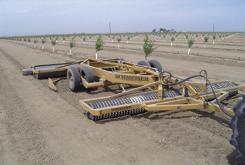
Right from the Start ® 1-800-288-8128 • www.tgschmeiser.com A Smoother Orchard Floor Starts with TG Schmeiser Orchards demand well-prepared, smooth terrain. The versatile Schmeiser Model 77 Orchard Leveler pulverizes the soil, fills depressions and packs it all in one operation. The right equipment does make the difference: better floor preparation leads to better orchard management and trouble-free harvests. Count on the Schmeiser Model 77 Orchard Leveler for proven soil preparation that will benefit your fields now and for the life of the orchard. Contact us for complete information. March 2024 www.wcngg.com 51
Figure 5. Efficacy of insecticides tested against hemipteran pests in an almond orchard. Bars with different letters on top are statistically significant.
From the Orchard

Connor Wagner on the Freedom and Fortitude of Moving Back to the Family Farm
By LORI FAIRCHILD | Contributing Writer
Like a lot of young people who grow up on a farm, Connor Wagner of Wagner Land Co. wanted to do something else. After growing up on his family’s dairy farm, he went to college and studied dairy science, but after college he went to work on the processing side of the industry. But there was always something about the farm life that appealed to him. Unlike many young people who leave the ag industry, he came back to the family farm, drawn by the lifestyle it offered his family and the opportunity to be his own boss.
Now, Wagner farms 170 acres of his own almond and pistachio trees and another several hundred acres in cooperation with his brothers. Wagner values the wisdom he has gleaned from the previous generations of growers, but he is also excited to put his own stamp on the industry.
We asked him to share with West Coast Nut his thoughts on advancements in the almond industry along with his hopes for the future.
Q. Tell us a little bit about the history of your farming operation.
My grandfather came from Switzerland and started a dairy in the ’40s. My dad grew the business and diversified into trees in 2007, and now he has three sons, including myself and a son-in-law, in the dairy/farming business.
Q. Being in the industry your whole life did you ever consider doing something else?
Out of college I got a job for Ecolab, which is a chemical manufacturing
company. I studied dairy science, and so that job took me into cheese processing plants and food processing plants, and I thought of coming back and starting a cheese company for the dairy because I grew up on dairy. I tried something else and didn’t like the corporate life. So, I came back to work for the family, and we’ve grown the dairy farming operation with my brothers.
Q. A lot of growers in the industry talk about how young people don’t want to stay on the farm. What made you want to come back?
Probably the lifestyle that it would provide my family. I had a corporate job, and I didn’t like it because all of the people I had to answer to. I came back because I enjoy problem solving, so if I identify a problem, it’s up to me to fix it. I love the freedom. You really can’t get that anywhere else. We have grown the business so that each sibling has their own autonomy and can stay out of each other’s way. Family can be hard to work with, but I feel we have done a good job and made it enjoyable. It’s a lot of hard work too. During harvest, I’m out there in 115-degree [F] weather fixing something, and that’s not very glamorous, but I love it. I am building a harvesting business, which is fun to me because I get to build something that’s separated from everything else. I have identified an avenue, and I’m going to go that way. My wife and I also got our real estate licenses. I sell ag land, and my wife does residential, so that’s another avenue.


 Connor Wagner and wife Tara both work in their communities to get young people engaged in farming.
Connor Wagner said he loves the freedom that comes from farming a crop to successful harvest.
Wagner embraces new technology and is currently building a business around low dust harvesting.
Connor Wagner and wife Tara both work in their communities to get young people engaged in farming.
Connor Wagner said he loves the freedom that comes from farming a crop to successful harvest.
Wagner embraces new technology and is currently building a business around low dust harvesting.
52 West Coast Nut March 2024
Q. How have your farming practices evolved in recent years? What new production practices have you embraced and why?
With the third generation taking over the business, we are utilizing new technologies available to us in order to save water and money and to produce higher yields.
A couple years ago, we started pressure bombing. We used to use just ET calculations and then we started pressure bombing. That helped improve our water usage and also when to start irrigating. We then started using Phytech, which uses a dendrometer on the tree trunk to measure the expansion and contraction of the tree trunk. So, every day the tree swells up as it takes in water and then every night it contracts a little bit. This happens on a scale of microns, so it’s really small, but if you’re not irrigating enough, the trunk will start to shrink. It helped us figure out when to start irrigating and has been a huge help.
There are other things like VFD pumps. We’re trying to get more efficient. We also put in solar panel projects to offset the cost of our electricity at the ranches.
Q. What advancements do you foresee having a big impact in the future?
Zero- or low-dust harvesting. I think that’s going to change the industry a lot. As we move forward, I think regulations are going to come in and kind of force us to go low dust or no dust. So, what I’m doing is trying to build a harvesting business around low dust harvesting. Previously we had
"
harvesting. I think that’s going to change the industry a lot.
somebody custom harvest for us, and so I figured why not buy the equipment to do it myself. Equipment is expensive, so I am growing a little every year. We still rely on some custom work. What I’m trying to do is buy pistachio equipment, which is zero dust, and utilize it in the almonds. I am trying to get ahead of the game a little bit where I can. But it’s tough because if your orchard isn’t planted correctly, you can’t really use the pistachio equipment
there. If you plant it kind of like pistachio orchard you can utilize zero dust harvesting in those orchards.
Q. Is that changing your thought process when you plant new trees?
We haven’t put in new trees yet, but we will soon, and that will definitely influence how I plan the next orchard.
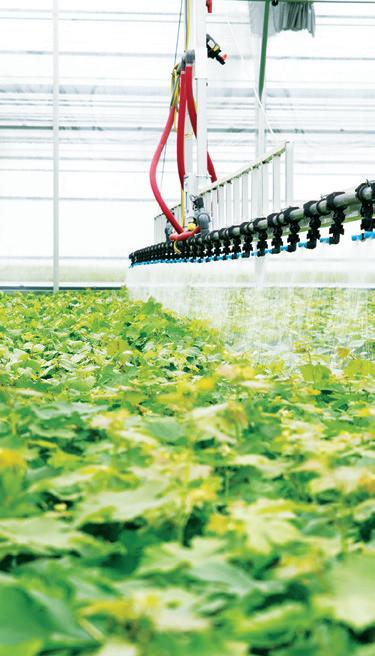
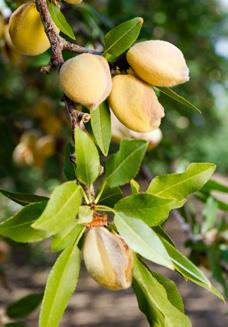

ContinuedonPage54
Zero- or low-dust
-Connor
Co. 27920 McCombs Road, Wasco, California 93280 © 2024 Wonderful Nurseries LLC. All rights reserved. WONDERFUL, WONDERFUL NURSERIES and the accompanying logos are trademarks of Wonderful Nurseries LLC or its affiliates. WonderfulNurseries.com 661.758.4777 SERVING YOUR VINE, ALMOND AND PISTACHIO TREE NEEDS PUT THE INDUSTRY LEADER TO THE TEST! Wonderful Nurseries Offers The Most Trusted Products In The Industry It’s no secret that Wonderful Nurseries is the most trusted nursery in the industry. Our wide selection, esteemed support team, high standards, and proven track record, make us your go to supplier for all your almond, pistachio, and grapevine needs. We put you, the grower first by offering the cleanest, most tested products in the industry backed by our commitment to excellence. Vines Almonds Pistachios March 2024 www.wcngg.com 53
Wagner, Wagner Land
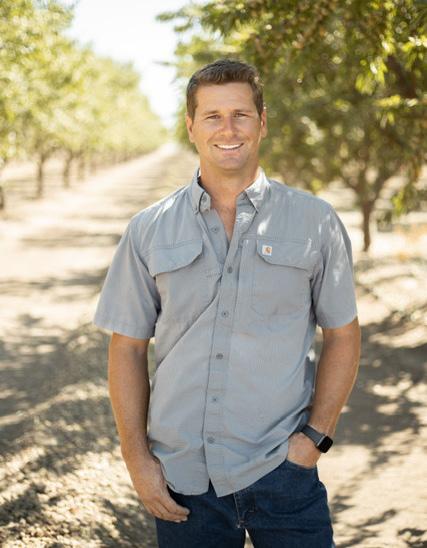
Q. Do you think that the industry as a whole will go that way?
That would take a lot of time. It’s kind of hard to get an old farmer to change his ways, which makes sense. You know, if it worked for him for 30 years, I wouldn’t change either, but I’m young and I’m trying to do things to save money. I have to be efficient if I’m going to start a harvesting business or continue to be a farmer, so I think at the end it will, but it would take a lot of time.
Q. Do you see any other advancements in either tech or in the way young people are coming in and making changes that you think is going to impact the future?
That’s tough because I’m pretty new. I’m young when it comes to farming almonds, so it’s hard to say. I’ve been farming my whole life but we started farming almonds in 2007 when I went off to college. I came back, and I’ve been farming my own since 2017. It’s been a large learning curve. I mean, since 2017, we’ve had some of the biggest rains on record, the pandemic which led to one of the largest dips in prices for almonds we’ve had since the 80s and it’s still going. It’s just really tough to get a grip on the industry, and tech is coming in, but it’s kind of hard to implement it when a lot of it is unproven. Like I said earlier, you kind of learn from the older generation, so you do what they do and then adopt your own stuff as you feel comfortable. That’s kind of why


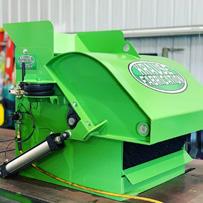

tech is kind of slow moving into ag, I think, but as the years go by, I think more younger people like me will adopt it.
Q. What are the three things that keep you up at night related to growing almonds?
Being at the mercy of mother nature, you can’t let things keep you up at night because you can’t control most things related to growing and farming. What keeps me up at night are human-caused problems affecting our business, and those include government regulations, inflation, taxes and interest rates.
Q. What are you most hopeful for in the future when it comes to farming, almonds?
I hope my children will want to farm or be able to still farm in California. Every year gets harder, but it provides an enjoyable life so I want them to have an option to be able to farm.
Q. What is your proudest achievement as it relates to your professional development?
Planting my own orchards and watching them grow. I am starting a harvest business that I keep growing every year, so when the harvest season is over, I am proud of all the hard work I put in to make the harvest happen successfully.
Q. What advice do you have to a young person getting into farming nuts today?
There are a lot of opportunities in any direction you go, so work hard at it, always learn from your mistakes because you will make them, and don’t give up.
Q. Who was the biggest influence or mentor for you in your nut farming career?
My oldest brother. He is a great businessman and is always there for me when I have questions for him.
Q. Can you talk a little bit about being involved in the local community?
Being in real estate, we have to be a part of the community, and I can thank my wife for that. We live in Ripon. It’s a small farming community with a lot of almond growers. She worked for the Ripon Chamber of Commerce and got to know a lot of good people and those people she introduced to me. She is on the board of directors for Garden Joy. It’s a non-profit garden in Ripon, and the schools go there to teach the kids how to garden and how to farm. It’s nice because we’re trying to get young people into farming and learn the responsibility of it. I think it’s a great thing for our farming community. My wife, Tara, just became a board member maybe four to six months ago, but that’s something that we hope to expand on.
ContinuedfromPage53 Comments about this article? We want to hear from you. Feel free to email us at article@jcsmarketinginc.com 209-754-9636 3474 Toyon Circle, Suite 333 Valley Springs, CA 95252 Complete Walnut and Pecan Hulling And Drying Systems
54 West Coast Nut March 2024
Wagner has no regrets about leaving the corporate life to rejoin the family farming operation.

NEW WATER-BASED FORMULA FOR UNSURPASSED CROP SAFETY
EASY-TO-USE PACKAGING FOR ACCURATE RATES
HIGH-QUALITY CHEMISTRY DIRECT FROM GERMANY
REGISTERED IN CALIFORNIA FOR ALMONDS, BLUEBERRIES, GRAPES, AND KIWIFRUIT


SEE HOW SITOFEX® CAN IMPROVE YOUR ALMOND HARVEST
Your almonds are worth saving.
It’s hard to see your profits falling off the trees and onto the ground. Sitofex® plant growth regulator helps your trees hold on tighter to the nuts you’ve worked so hard to produce by maximizing the cytokinin effect.
Cytokinins are naturally occurring compounds in plants. By applying a single application of Sitofex® you can enhance this effect. Sitofex® helps you keep more nuts on the tree. Naturally, saving more nuts results in higher yields at harvest.
Stop the drop. Spray Sitofex this year. Harvest more almonds later by saving them now.
Contact John Meyer at 559.545.4701 or email john.meyer@alzchem.com SitofexUSA.com

SAVE YOUR NUTS NEW FOR ©2024 Alzchem Trostberg GmbH. All rights reserved. Always read and follow label directions. Sitofex® is a registered trademark of Alzchem Trostberg GmbH.
California’s New Salmon Strategy
By MIKE WADE | California Farm Water Coalition


Governor Gavin Newsom recently released his California Salmon Strategy for a Hotter, Drier Future. It is a 37-page roadmap designed to achieve the goal of restoring aquatic ecosystems in the age of climate change, as the introduction says.
It is important to recognize this comprehensive approach to restoring salmon populations is an official departure from previous efforts at the state and federal level to improve the survivability and reproduction of California’s salmon. It takes a half-dozen strategies and combines them into a plan that may turn the tide on salmon restoration.
Some of it sounds great and incorporates efforts that have proved successful such as food web projects in the Sacramento Valley that have succeeded in delivering fatter, healthier young salmon to the Sacramento River, increasing their chances of survival in the wild in order to return in a few years to spawn.
Other elements remain questionable, including vague references to flow requirements that could create significant hardships or increased costs on other water users, including farmers and urban families and businesses. Growers
56 West Coast Nut March 2024
on the Scott and Shasta rivers in Northern California have faced significant hardships because state-mandated flow restrictions have significantly hindered their ability to divert irrigation water, even though fish populations appear to be very healthy.
The Governor’s plan includes six priorities:
• Remove barriers and modernize infrastructure
• Restore and expand habitat for salmon
• Protect water flows and water quality in key rivers at the right times to support salmon
• Modernize salmon hatcheries
• Transform technology and management systems for climate adaptability
• Strengthen partnerships
The common denominator in all this, of course, is water. Salmon need it and so do people, including growers, businesses and rural and urban communities. But salmon also need habitat like rivers with side channels where baby salmon migrating to the ocean can rest. And they need food to be able to grow and make it to the ocean. They need strength to survive and return in three years to spawn to start the cycle all over again.
But salmon have not been getting consistent habitat benefits, and the abundant food they need when you consider that flow-based regulations have dominated salmon recovery efforts since the salmon biological opinion was adopted in 2009.
Newson’s plan emphasizes willing buyer/willing seller transactions of water to improve stream flow. While mentioned in the document as “voluntary,” the water user community, including the State Water Contractors, federal water users and local water districts, remind us when they sign onto programs like this that their efforts are mandatory. Commitments for higher water flows and millions of dollars for
restoration programs are there for the purpose of improving the success of California salmon in order to deliver better water supply reliability in the future.
In a recent LinkedIn post, State Water Contractors General Manager Jennifer Pierre demonstrated their commitment to work across the aisle with conservation groups to achieve a common goal.
“One of the most rewarding things I did during COVID isolation,” said Pierre, “was strike up a friendship with Rene Henery at Trout Unlimited. We discussed all of the ways we actually AGREE on solutions and kicked off what is now the ‘Reorienting to Recovery’ salmon collaborative…”
The collaborative includes the Delta Stewardship Council, The Bay Institute, Trout Unlimited, Metropolitan Water District of Southern California and others. Action 6.2 in the Governor’s salmon strategy specifically mentions “Reorienting to Recovery,” sending a clear message to state elected and
appointed officials that cooperative efforts to solve problems are a much better path than a top-down regulatory approach of the past.
Newson’s plan is an effort to bring together different elements in the long effort to balance water supply reliability and protecting our natural environment. Most people will find something in it they like. They will also find things that raise questions and the level of caution in embracing it.
It is positive that the Governor’s approach openly seeks partnerships and voluntary commitments toward improving the ecosystem that supports salmon. And it is a stark difference from 25 years of failed attempts at helping salmon by simply releasing more and more water to the ocean through degraded channels and expecting better results.
Comments about this article? We want to hear from you. Feel free to email us at article@jcsmarketinginc.com
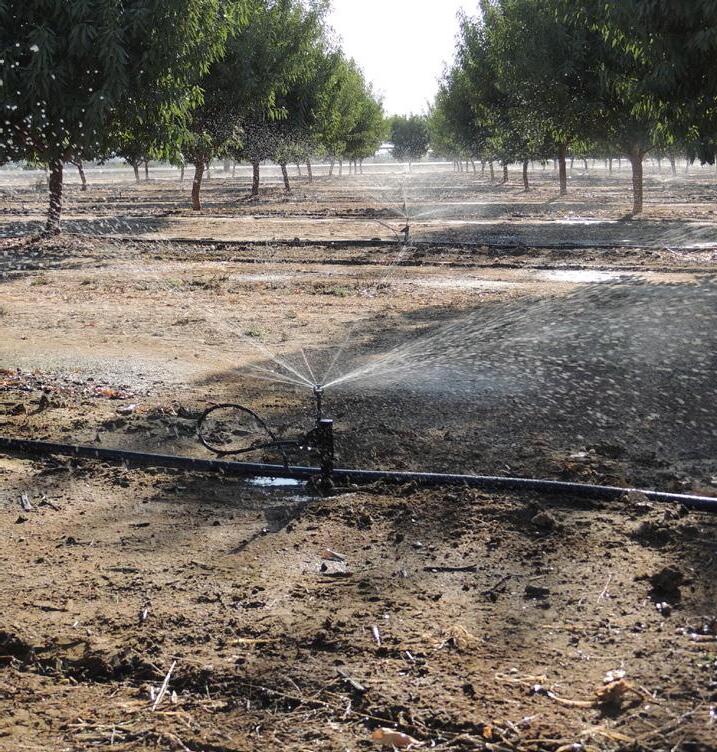
Fan-Jet® Microsprinklers Non-Stop® Drip Emitters Premium Plus Tubing “PCI” Inline Drip Tubing BigFoot® 3.0 Drip Tape 50 TH ANNIVERSARY 1974-2024 Thank you! www.bowsmith.com 131 Second St. • Exeter, CA USA American Made Family-Owned March 2024 www.wcngg.com 57

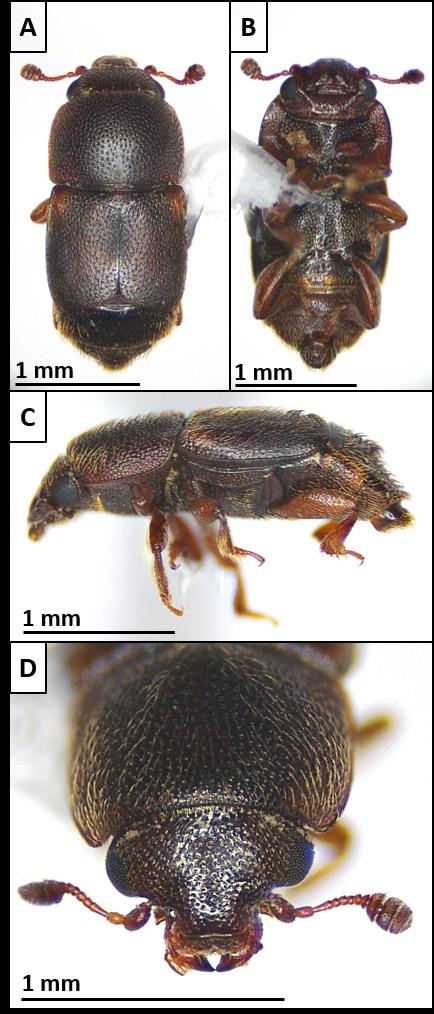

Navel Orangeworm and Carpophilus Beetle Pressures Put Spotlight on Research
By KATHY COATNEY | Contributing Writer
Acouple of things happened in 2023 that set the stage for last year’s horrible NOW year.
First, poor winter sanitation.
Second, part of the season was a lot cooler, so the first flight (spring flight) peaked about three weeks later than the previous years.
Third, hull split. It usually happens around the same time as NOW begins to emerge in second flight. In 2023, NOW emergence started about two to three weeks before the hull split and thus laid eggs in the mummies.
“We had a split population where half of NOW were found in the mummy nuts and laid eggs. The second half of the population infested the fresh nuts, and all of those emerged at the same time as a third flight because it takes a longer time for the moth to emerge from the mummy,” said Jhalendra Rijal, UCCE area IPM advisor for northern San Joaquin Valley.
“We ended up having a huge third flight peak, and that’s the one that hammered the majority of the Nonpareils as well as the pollinators,” he said.
Insecticide applications weren’t as timely in 2023 either. The coverage, hull split timing and the total duration of the split didn’t coincide at once, Rijal said.
The other issue was an uneven and protracted hull split. “Hull split is always like that, but 2023 was a particularly bad year,” he said.
“Economics was a factor too. The lower price of almonds, higher costs for winter sanitation, then unfavorable weather conditions. All of that contributed to having mummies everywhere,” Rijal said, adding there were orchards that were no or low maintenance throughout the season, likely contributing to higher NOW population.
Mating Disruption
“I like to call mating disruption an insurance policy,” Rijal said. “It’s a long-term investment where you apply
mating disruption with the goal being to manage navel orangeworm properly in the long run.
“It’s even more important now because a lot of mummies currently have a lot of larvae in them. That means you can expect potentially higher pressure in 2024 too. In that case, using mating disruption helps to reduce the damage. The mating disruption research my UC colleagues and I did showed about 50% reduction in damage in almond orchards of size from 40 to 120 acres when integrated with the other currently available tools including mummy sanitation and insecticides,” he added.
Mummy sanitation is also influencing the crop grade because a lot of mummies are mixed in with the new nutmeats. If there are a lot of them, growers will have poor grade sheets and lower pricing, Rijal said.
Not investing in mating disruption and sanitation affects the crop and the bottom line, he said, although he totally understands the economic pressures that growers are facing right now.
Chemical Applications
Based on the latest work, the lepidoptera-specific products used for NOW control are still a good, solid product with good efficacy, Rijal said, and there haven’t been signs of resistance to his knowledge.
But Rijal reminds growers you can’t spray your way out of NOW. “It’s not going to work, and it’s never worked in the past. Maybe if you’re lucky one year might work, but it won’t work consistently. The insecticide is effective, but getting the insecticide to the target is the challenge, and you’ll never be able to do that unless you spray every week. The best bet is to combine all the tactics so that you will have less pressure at hull split,” he said.
Sterile Insect Technique (SIT)
Houston Wilson, an associate co-
Carpophilus beetles overwintering inside the almond kernel collected in early January 2024 (photo courtesy J. Rijal.)
Adult carpophilus beetle (photo courtesy Sarah Meierotto, UC Riverside.)
58 West Coast Nut March 2024
Almond with carpophilus damage (photo courtesy H. Wilson.)
operative extension specialist in the Dept. of Entomology at UC Riverside, said the sterile insect technique (SIT) was born out of an earlier 40-year project that successfully eradicated pink bollworm using a combination of SIT, mating disruption, insecticides, crop sanitation and Bt cotton.
As part of this earlier project, a mass rearing and irradiation facility for pink bollworm was constructed in the early 1990s in Phoenix, Ariz. and operated by the USDA-APHIS. In 2018, the California pistachio industry partnered with USDA to see if they could develop sterilization techniques for NOW using this same facility, Wilson said.
“Unlike pink bollworm, the NOW SIT effort was never intended to be an eradication program. It was to develop sterile insect technique as an additional tool in the toolkit for navel orangeworm management,” Wilson said.
SIT research for NOW started in 2018. “When we were brought on to the project, they were rearing about a million moths per day,” Wilson said, adding that has since increased, and the strain of moths used at that facility has improved.
Experiments were conducted to determine the impact of transporting and releasing the moths and the impact on their performance. “By performance, I mean when we release them in an orchard, how many of them do we recover relative to wild moths, and are they able to successfully find a sentinel female and mate. And in the reverse, to see if a sterile female can attract a wild male and successfully mate.” Wilson said.
They found problems with the release methods being used, Wilson continued. So instead of just spreading the moths on a tray, we shifted to a paper grocery bag with cardboard tubes.
“By moving them to that paper bag, I think we gave them more shelter and vertical resting space, which if you think about what they’re doing on a tree, they’re resting in this vertical position,” he said.
“After we started putting them into the paper bags, we started to recover moths pretty consistently, but it remains unclear how this compares to the recovery you would expect with healthy wild moths, so we certainly still have more work to do” Wilson continued.
New Strains of Moths
A few years ago, the Phoenix facility began selecting for a different strain of moth. “Basically, what they did was they took the current existing strain, ran it through their production process, and the ones that came out healthy on the other end, they actually started breeding those to create a strain of moth that was better adapted,” Wilson said.
“We’ve run experiments over the past two years with this new strain of moth, and the recovery is about twice as high as the previous strain. And we just confirmed this past year that compared to the old strain, this new strain of moth can just as effectively mate with wild moths. Males can find wild females and the females can attract males,” he said.
SIT Research Continues
At this point, it still remains unknown if SIT will be ecologically and economically feasible, but there’s enough positive findings to merit continuing the research.
“There’s so much about the ecology of navel orangeworm that we have to better understand, like dispersal and move-
ment between orchards. That’s a really important thing for us to know if we want to implement sterile insect technique at scale,” Wilson said, but it might come down to the cost per moth isn’t enough to to be economically viable.
Even if that happens, all is not lost because information on NOW dispersal is helpful for other management strategies like mating disruption, Wilson said.
“While the scalability of SIT remains to be seen, we continue to emphasize the use of existing strategies like crop sanitation, mating disruption and insecticides,” Wilson said. “And we continue to refine and improve those tactics as well. For instance, we’re now looking at sheep grazing for orchard sanitization, which may provide an alternative when inclement weather prevents heavy equipment or field crews from getting in to sanitize.”
In the interim, crop sanitation, mating disruption, welltimed sprays and timely harvest are critical components to NOW management, he said.
“We need to see wider adoption of some of these practices. We also want to see better regional coordination of these practices because we know navel orangeworm has a really high dispersal capacity and moves between orchards,” Wilson said. “In this way, local management efforts may be undermined if nearby orchards aren’t adequately controlling NOW.”
Carpophilus Beetle
Carpophilus beetle has been a pest of almonds in Aus-

ContinuedonPage60 March 2024 www.wcngg.com 59
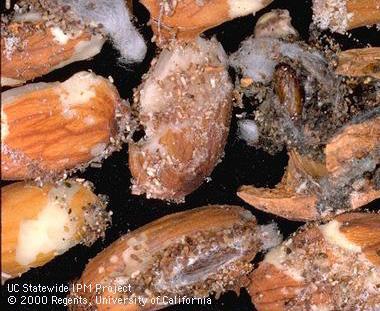
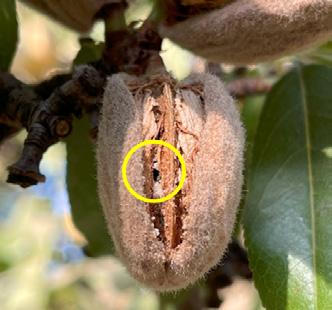

ContinuedfromPage59
tralia for over 10 years, but nothing was found in California until late August 2023. Wilson first received a report from a PCA in Madera County in an almond orchard. After looking at the photos and inspecting nuts on-site, Wilson recognized it as carpophilus beetle and sent specimens off to CDFA, who confirmed it as Carpophilus truncatus, which is the species they’ve been dealing with in Australia over the past decade.
Almost simultaneously, Wilson received another report from a pistachio orchard in Kings County with the same signs of damage in pistachios.
“In both cases, it turned out to be carpophilus beetle,” he said.
A regional survey was then launched throughout the San Joaquin Valley and part of the Sacramento Valley to be on the lookout for the carpophilus beetle. Very quickly it was found in Stanislaus, Merced, Madera and Kings counties.
“All of a sudden, we’ve got this beetle in multiple counties. In one case, specimens were actually collected in 2022 for another project, so it seems to have been in the county for more than a year. We’re still working through our samples, and we are pretty sure we’ll come up with confirmed finds and additional counties,” Wilson said.
Wilson, Rijal and UCCE’s David Haviland will be conducting research on the carpophilus beetle in 2024.
Overwintering
The carpophilus beetle overwinters in the remnant mummy nuts, the same as NOW, then becomes active in the spring, probably making use of those remnant nuts as a reproductive substrate, again
like NOW, Wilson said.
The first generation comes out of the mummies because there’s no new crop nuts for them to attack, then they go back onto those mummies until hull split. At hull split, some portion of the carpophilus beetle population moves into the new crop nuts. The adults will chew through the shell, lay their eggs inside, then the larvae develop on the kernel. The larvae leave distinctive feeding damage with an oval-shaped tunnel, plus a lot of frass and chewed up nut meat which forms a fine, white, powdery substance, Wilson said.
There are some key differences between overwintering NOW and carpophilus beetle. NOW likes to overwinter on mummies in the tree because it’s dry, off the ground, and there is less degradation of the nut. The carpophilus beetle, in comparison, seems to prefer mummies on the ground.
Chemical Controls
“What we’ve seen so far and heard from the Australians is that chemical controls are really challenging with this insect, primarily because of coverage issues,” Wilson said.Research in Australia did experiments using different spreaders, but couldn’t get consistent control. Growers there do spray, but the outcomes are really mixed, Wilson said, and mating disruption has not been developed for this beetle.
Australia has a limited set of chemistries available to them, but they’ve primarily been using bifenthrin, which is used for NOW in California.
Rijal will run pesticide trials in 2024 using insecticides that are commonly used for navel orangeworm as well as others that could be effective for the car-
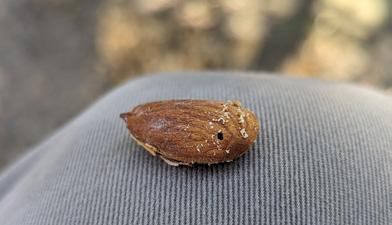
pophilus beetle. Additionally, Rijal and Wilson are doing studies to understand the biology and ecology of this insect in California’s almond and pistachio orchards.
For now, Wilson says the take home the message for carpophilus beetle is to focus on crop sanitation, especially after 2023 with such extremely high levels of NOW infestation.
The beetle’s overwintering mortality dynamics aren’t totally understood yet, Wilson said. “We’ve really been emphasizing, when we say sanitize, we’re talking about getting the nuts out of the tree, on the ground, mow them up, maybe mow them twice. They have to be destroyed, not just resting on the soil surface.
“Don’t just give them a light disking because there was one study in Australia where they took infested mummy nuts and buried them as deep as three feet down, and even at three feet underground, the carpophilus beetle could emerge in the spring. You have to destroy these things, don’t just bury them,” he said.
Comments about this article? We want to hear from you. Feel free to email us at article@jcsmarketinginc.com
Almond with hole chewed through it by carpophilus beetle (photo courtesy J. Rijal.)
Adult carpophilus beetle in almond (photo courtesy J. Rijal.)
Almonds infested with navel orangeworm (photo courtesy Jack Kelly Clark, UC Statewide IPM Program.)
60 West Coast Nut March 2024
Almond with tunnel from carpophilus feeding (photo courtesy H. Wilson.)
® Cell Power® SLYCE®
opening up soils with OMEX® plant nutrition technology
The benefits of Cell Power® SLYCE®
Provides organic compounds which increases the soil available fertility by reacting with granular nutrients to release their components for a faster and more efficient fertilizer use by plants
Promotes plant health
Cell Power® SLYCE® increases the plants ability to counter stress., and creates a good living envrionment for beneficial microbial masses
Aids water penetration and increases the permeability of the soil profile, providing better soil moisture movement for developing crops
Stimulates seed germination in a short time, greatly increasing the harvest and fruits quality
Boosts soils
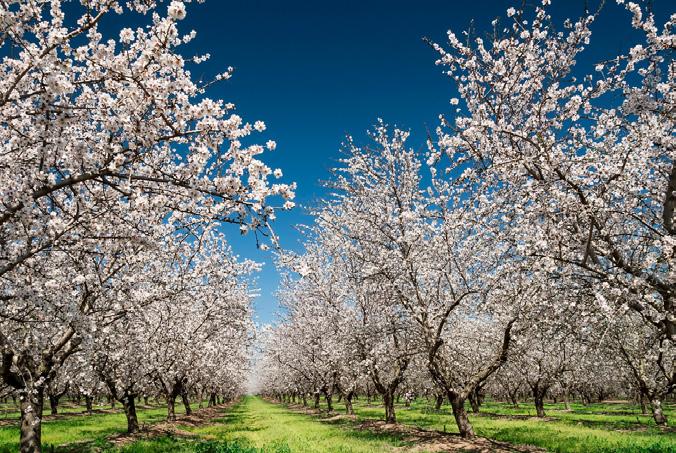
Cell Power® SLYCE® increases the organic matter of soil and improves soil
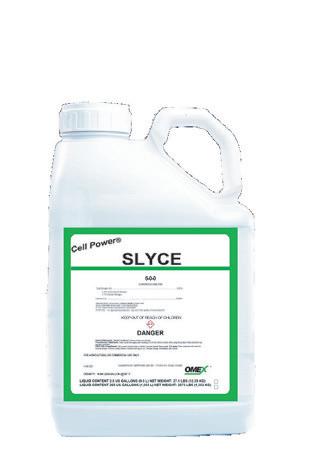





September 25th-26th, 2024 Register Early and Save Price increases on May 31st, 2024 Early-bird Pricing $300/person Register to Exhibit at: HOSTED BY: CO- HOSTED BY: Visalia Convention Center 303 E Acequia Ave, Visalia, CA 93291

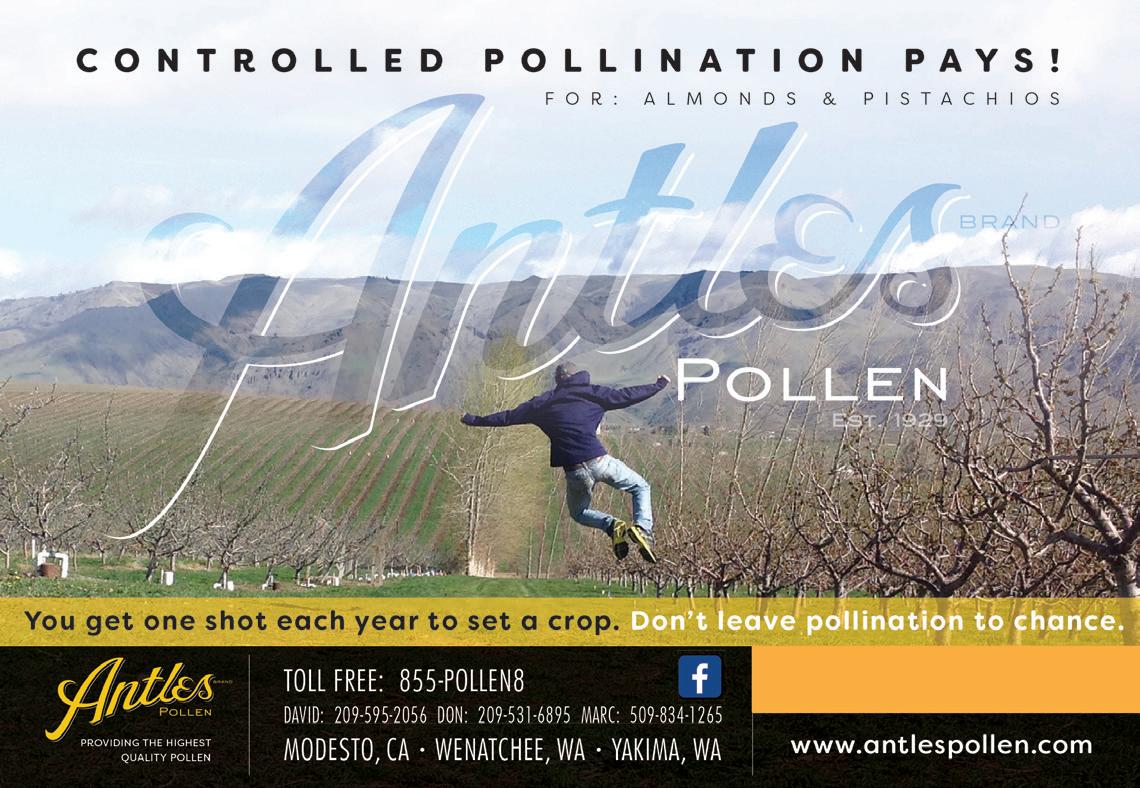








For more information Call 559-661-6138 or Visit www.omexusa.com Improving plant health for 45 years Boosti ing Nut Tree Growth with OMEX® plant nutrition Cell Power® Zynergy® Bringing plant health to life Cell Power® SizeN® A nitrogen revolution has arrived Cell Power® C Calcium Platinum & Cell Power® Calcium Gold Assists in Calcium absorption into the nuts
Power® SLYCE® Opening up soils with soluble calcium enhance color
Cell

















































































































 Derek Sohnrey and his family started a gift shop off Highway 99 near Orland in 2014 as a way to add value to the crops they grow (all photos by V. Boyd.)
Derek Sohnrey and his family started a gift shop off Highway 99 near Orland in 2014 as a way to add value to the crops they grow (all photos by V. Boyd.)















































































 “We started as growers,” says Blake Vann of his family’s tree-nut operation. “That’s where our roots are” (photo courtesy Vann Brothers.)
“We started as growers,” says Blake Vann of his family’s tree-nut operation. “That’s where our roots are” (photo courtesy Vann Brothers.)








 One of the strengths of the Almond Alliance is its ability to help remove red tape and streamline export shipping (photo courtesy Port of Oakland.)
One of the strengths of the Almond Alliance is its ability to help remove red tape and streamline export shipping (photo courtesy Port of Oakland.)






































 Figure 1. Different types of damage, including brown spot, caused by large hemipterans feeding in almonds (photo courtesy J. Rijal.)
Figure 1. Different types of damage, including brown spot, caused by large hemipterans feeding in almonds (photo courtesy J. Rijal.)
























 Connor Wagner and wife Tara both work in their communities to get young people engaged in farming.
Connor Wagner said he loves the freedom that comes from farming a crop to successful harvest.
Wagner embraces new technology and is currently building a business around low dust harvesting.
Connor Wagner and wife Tara both work in their communities to get young people engaged in farming.
Connor Wagner said he loves the freedom that comes from farming a crop to successful harvest.
Wagner embraces new technology and is currently building a business around low dust harvesting.





































